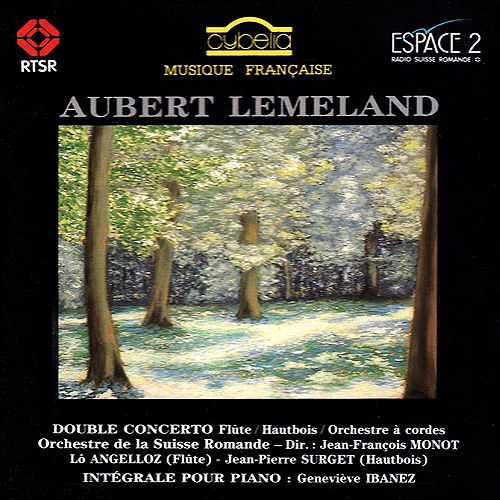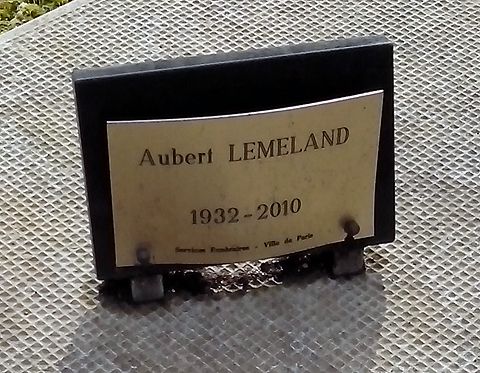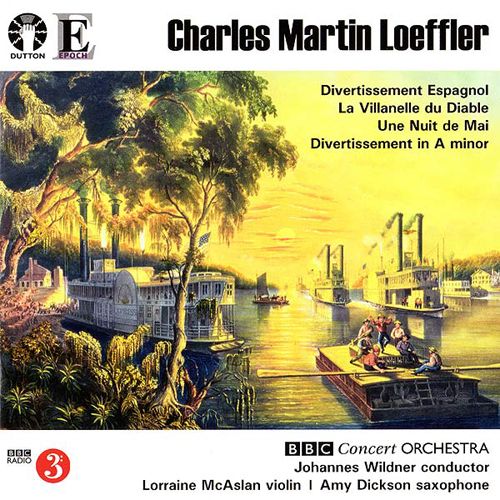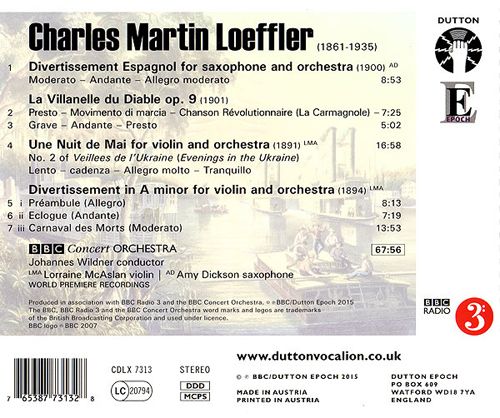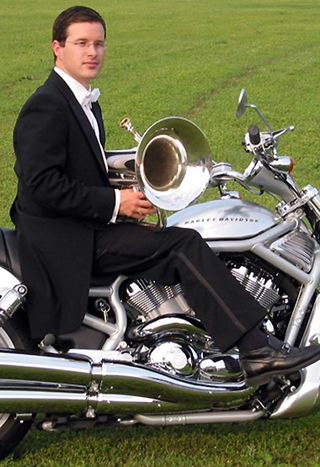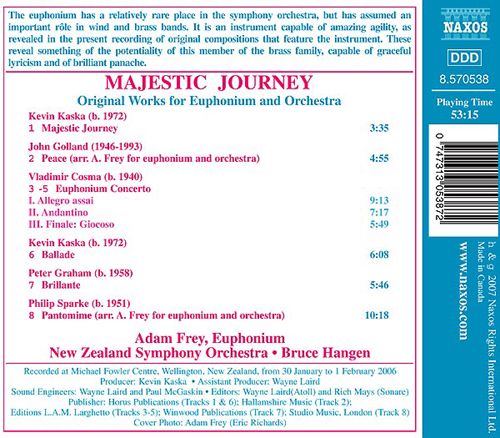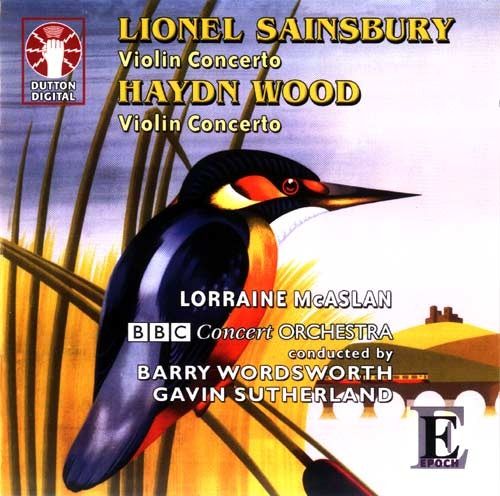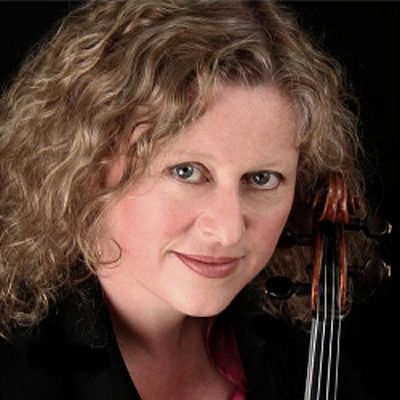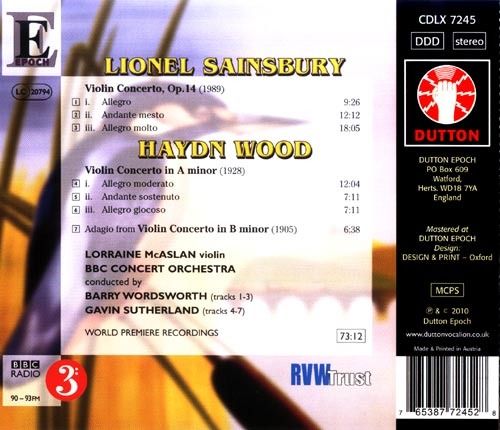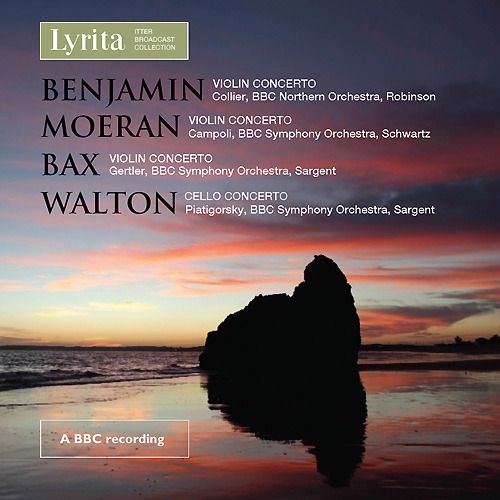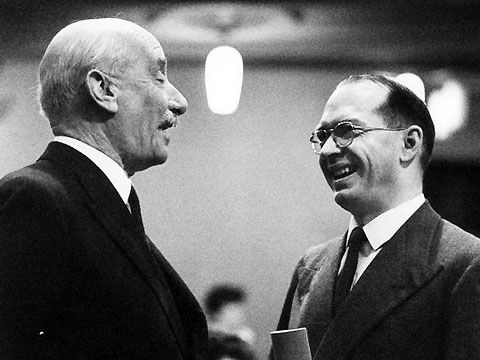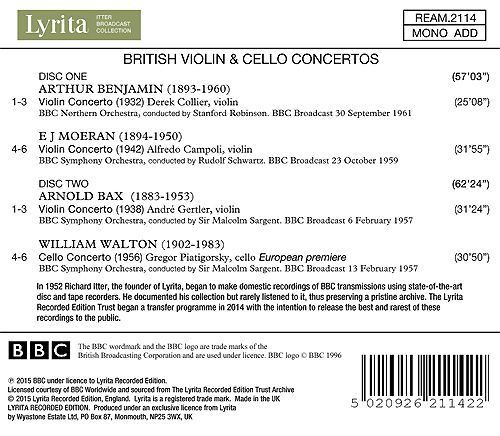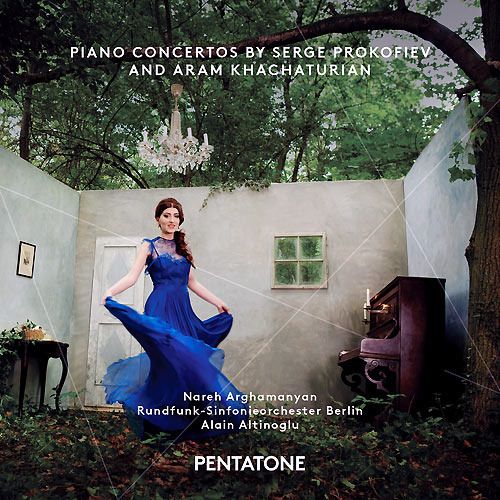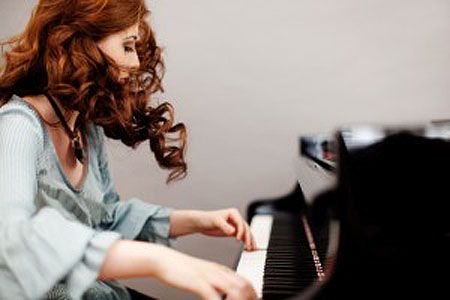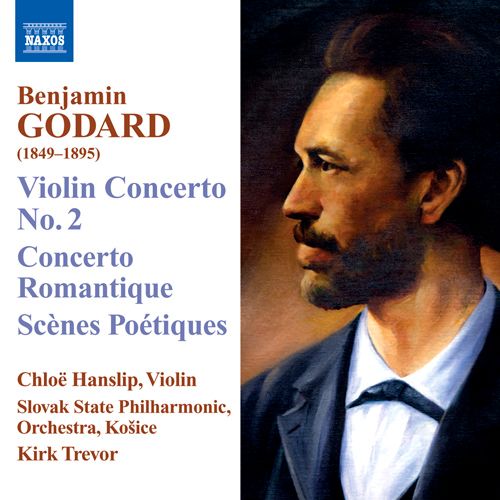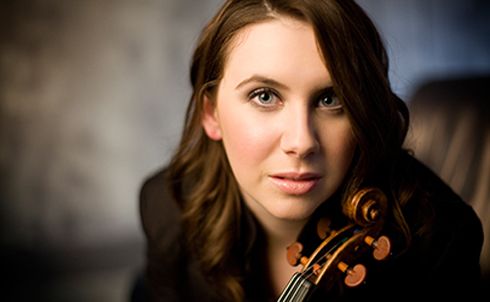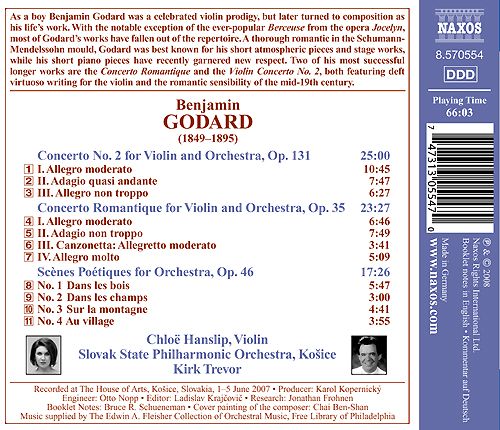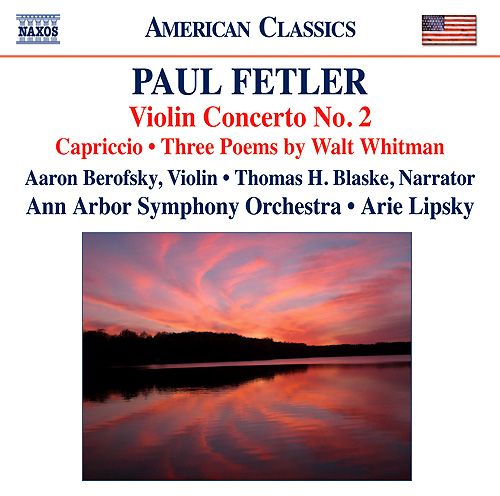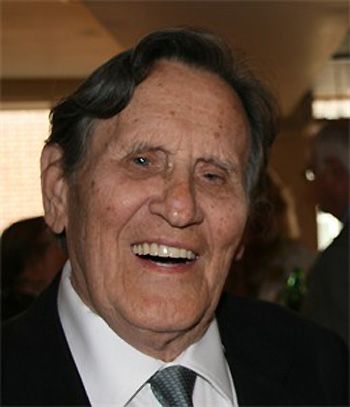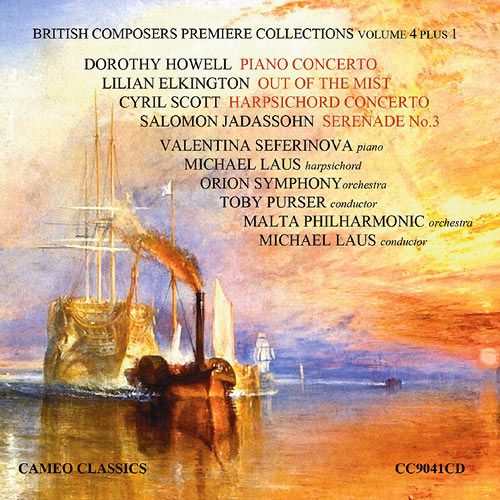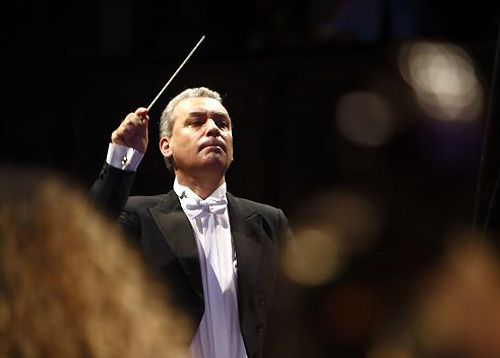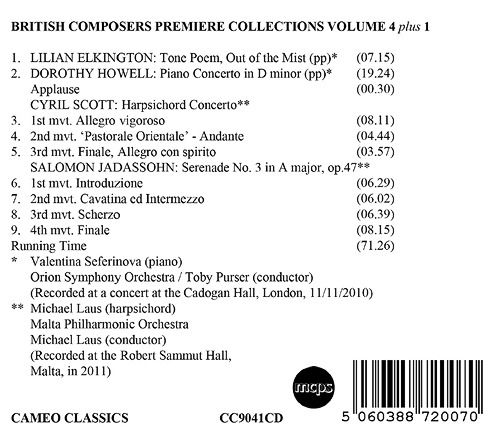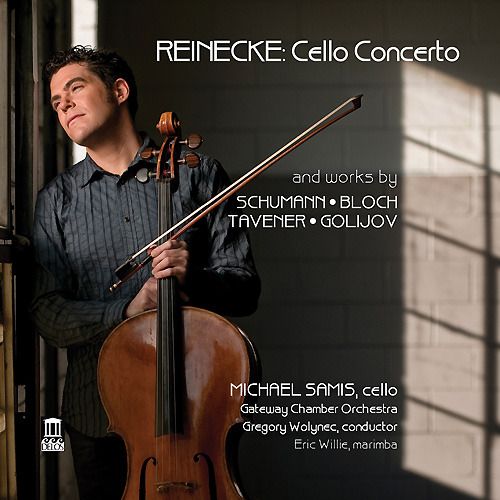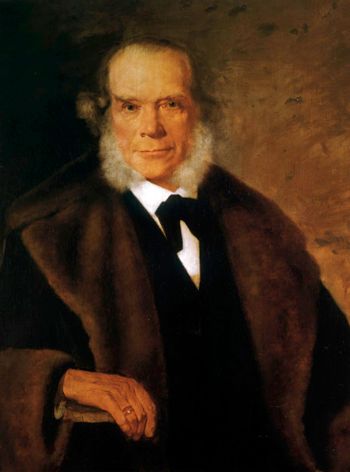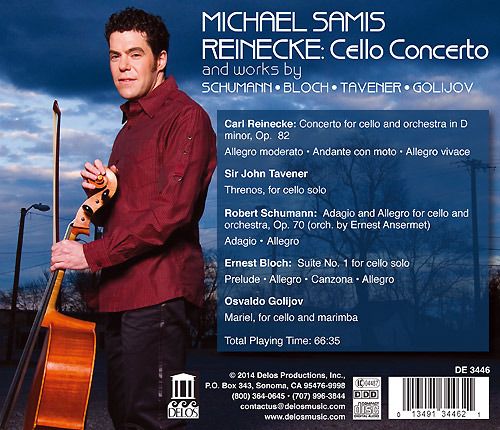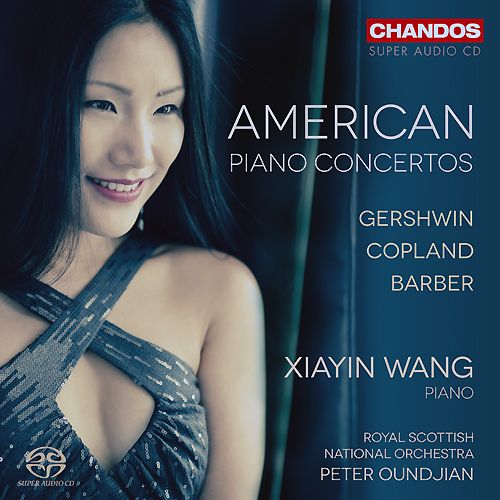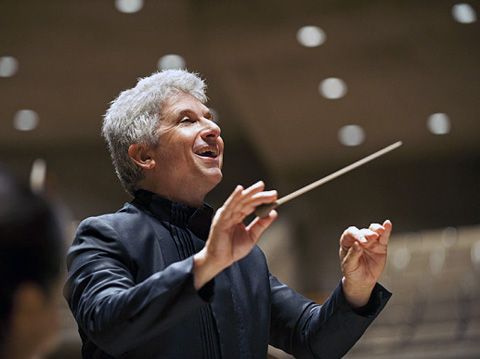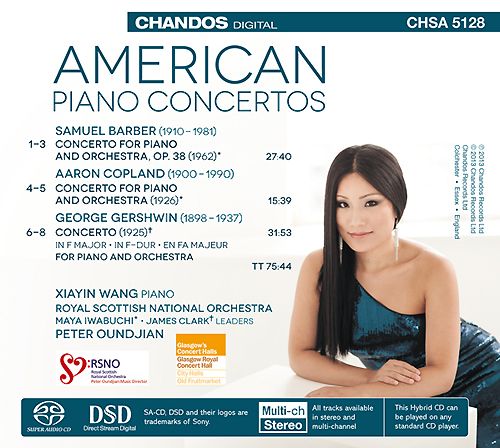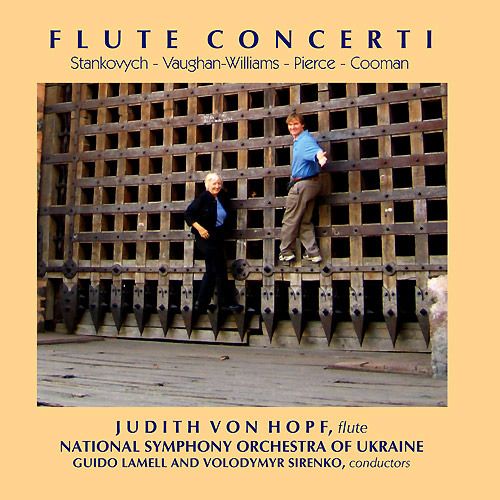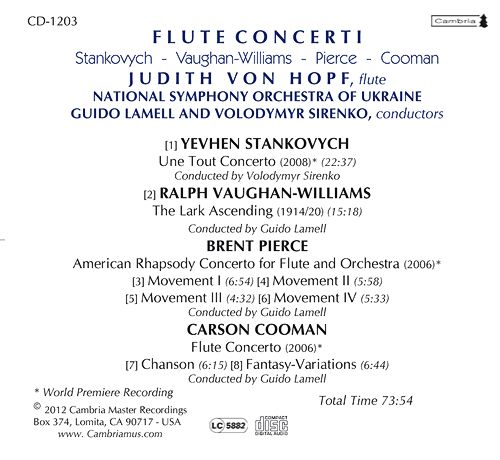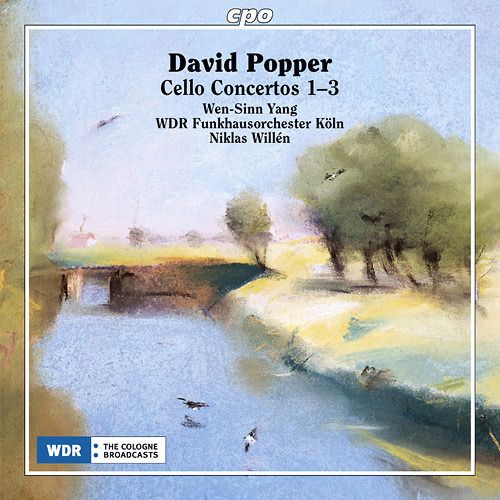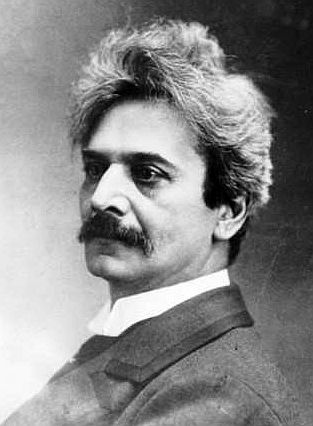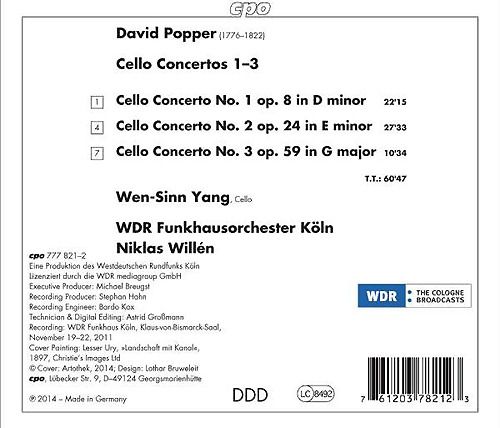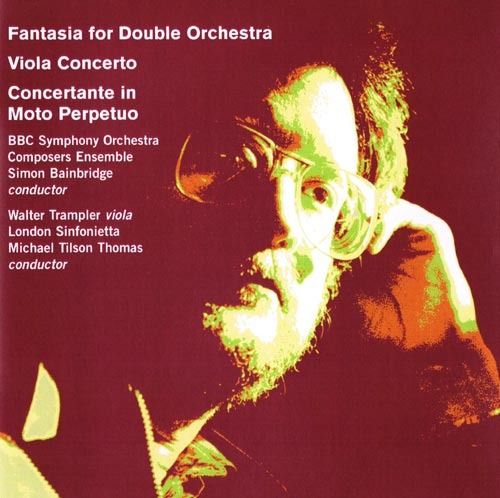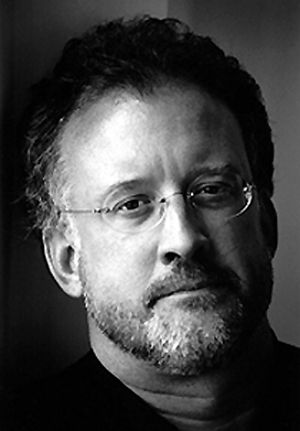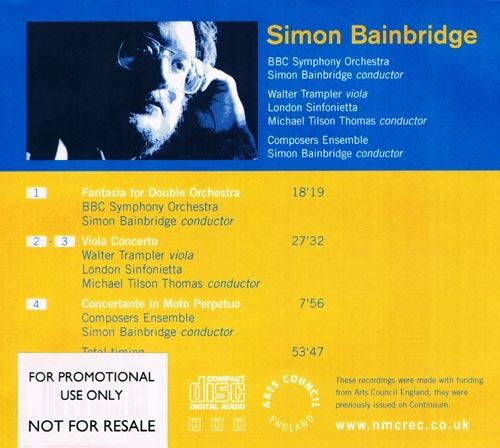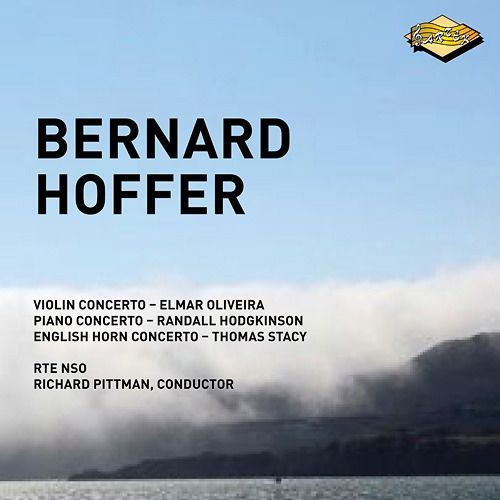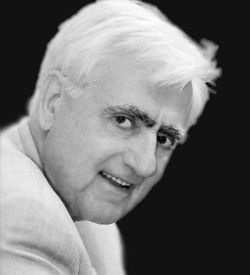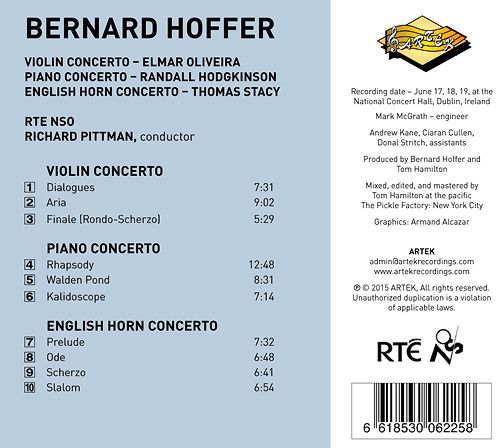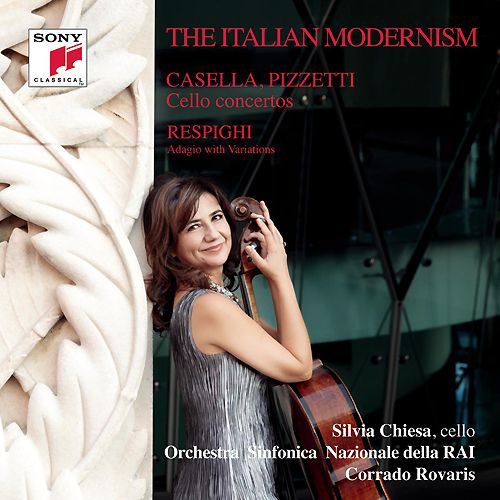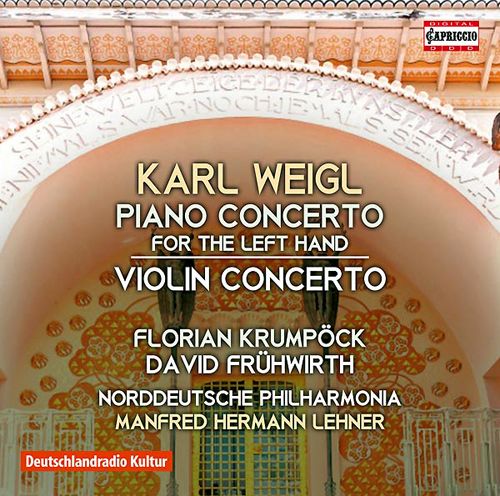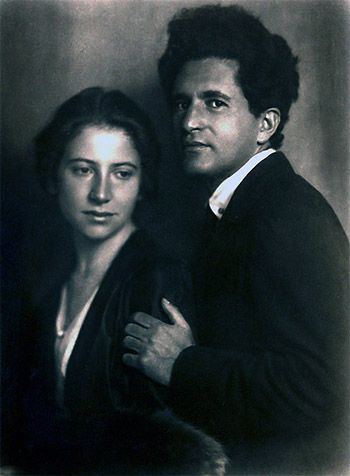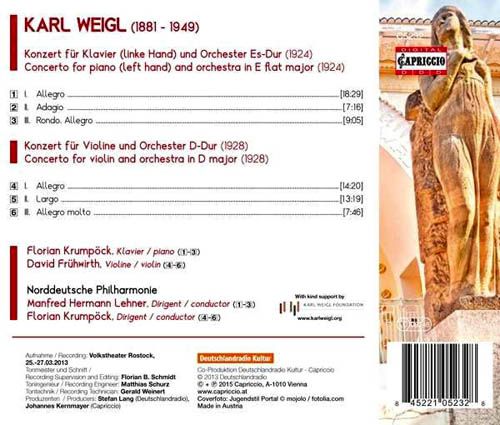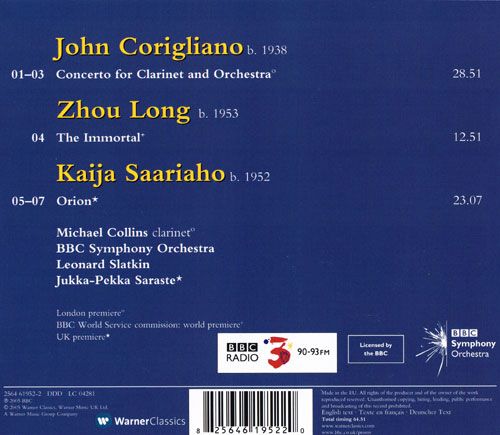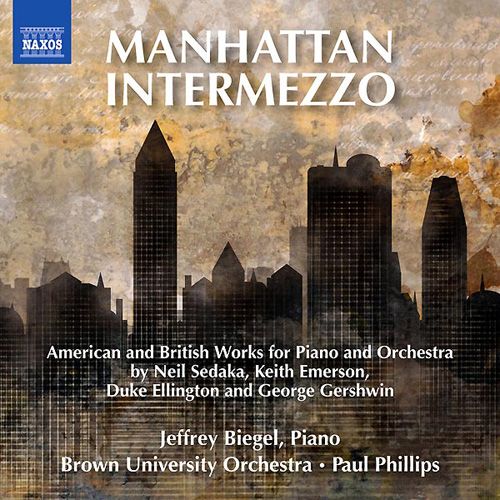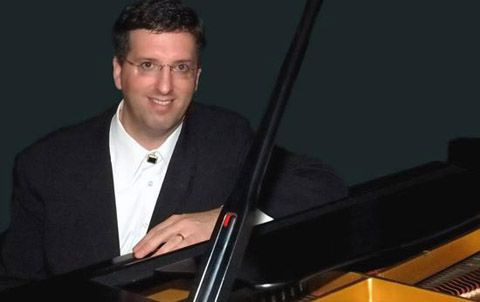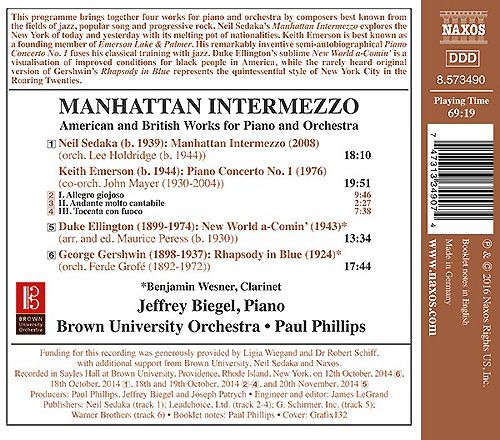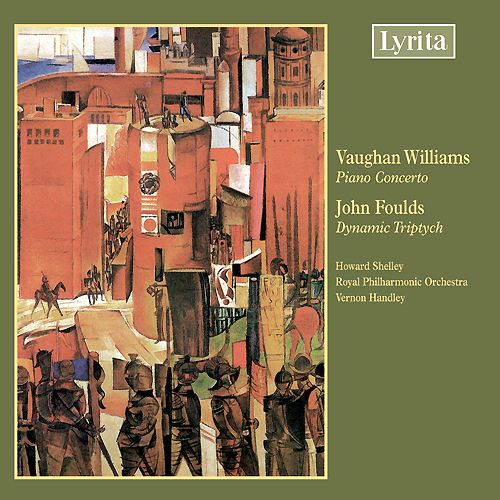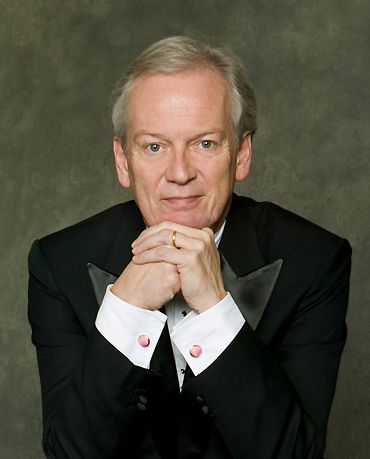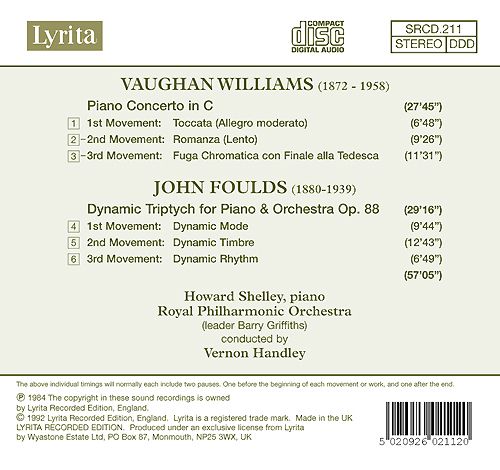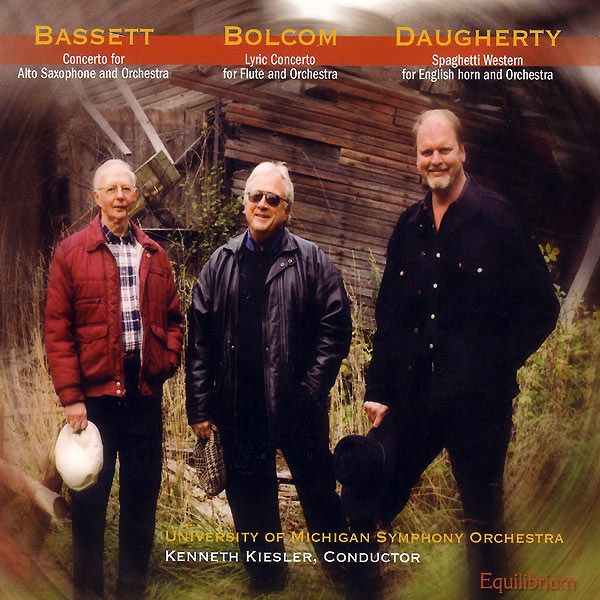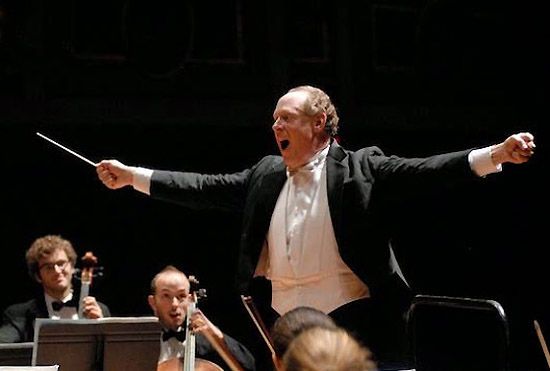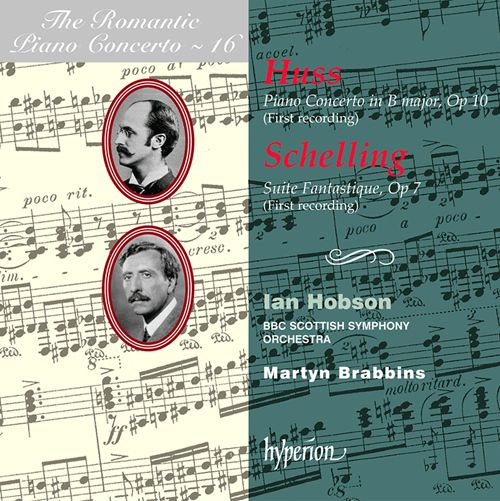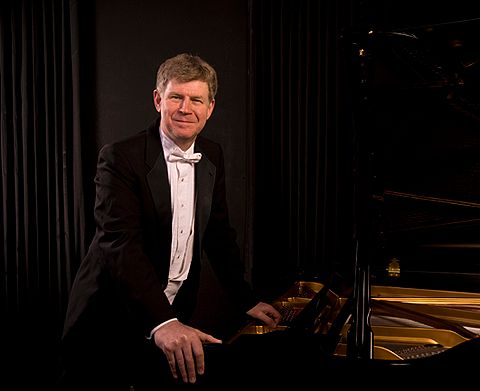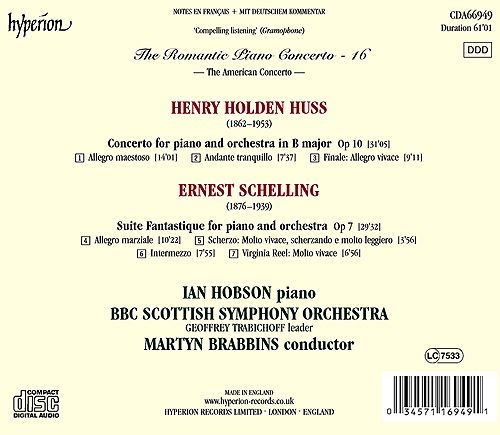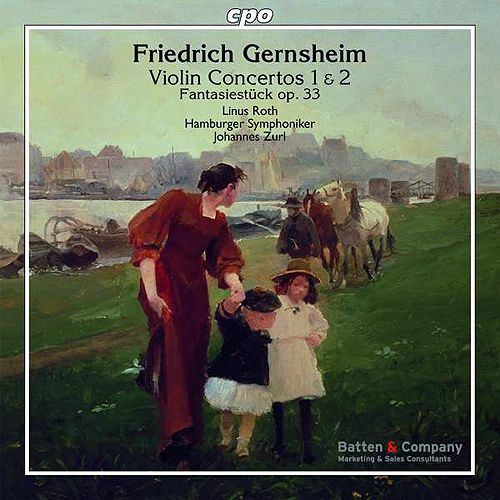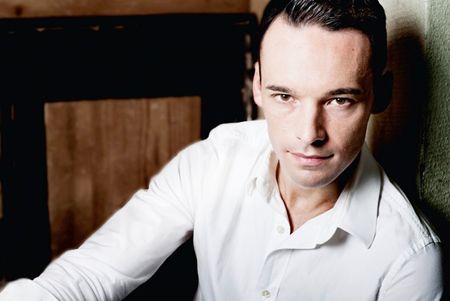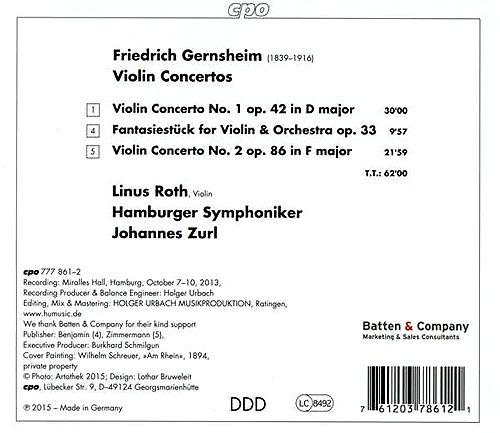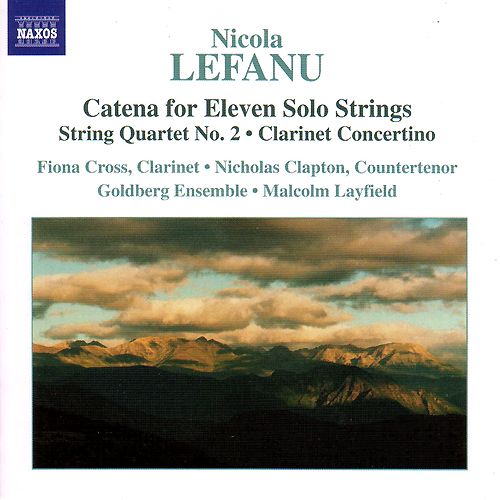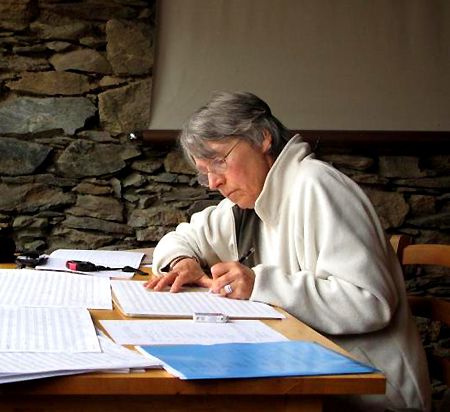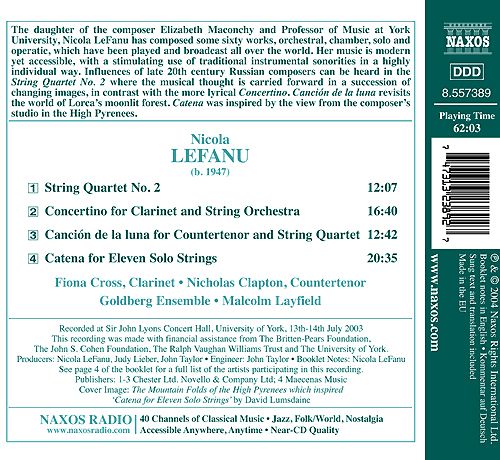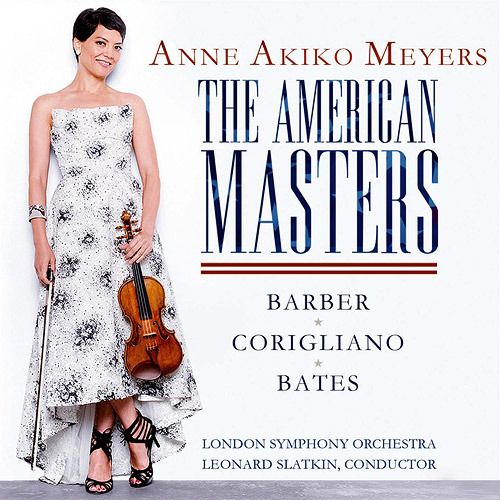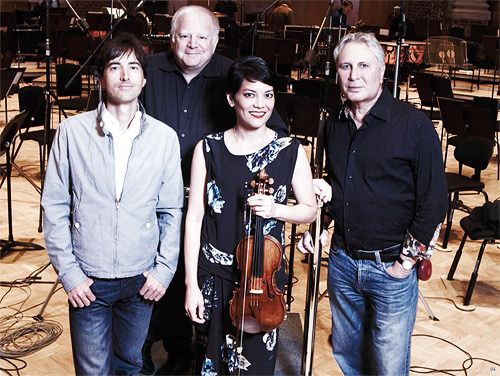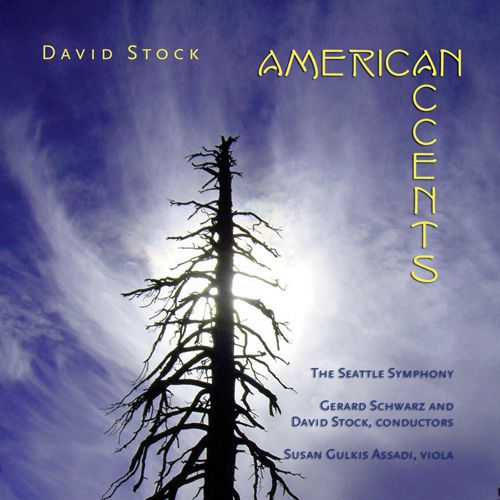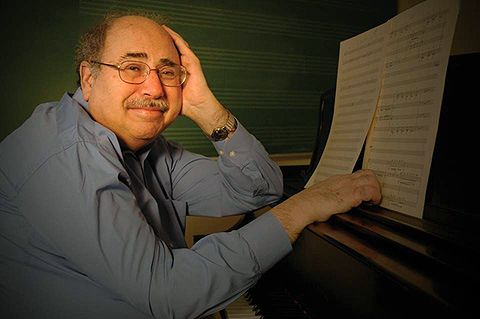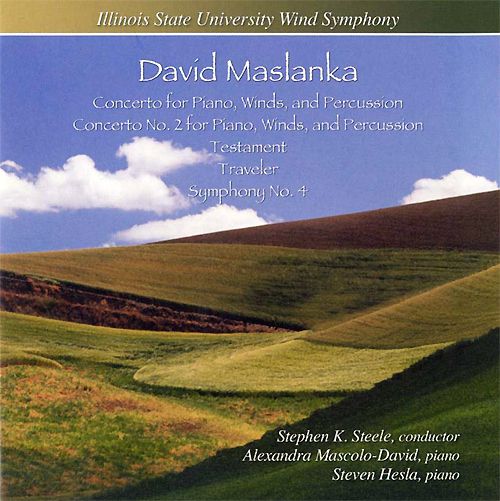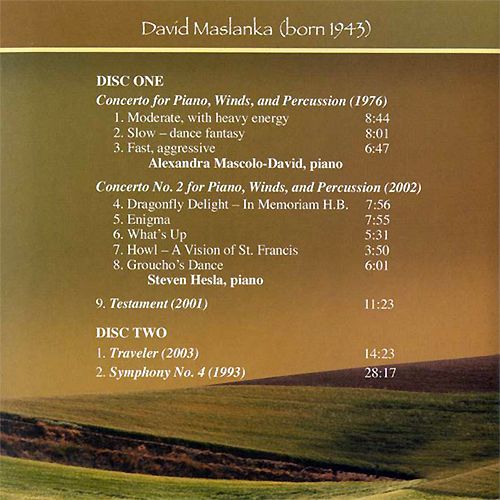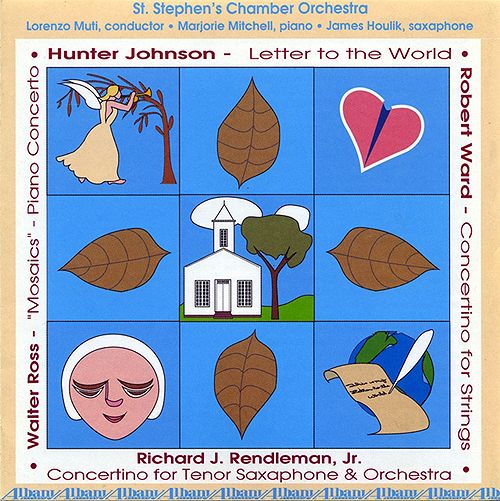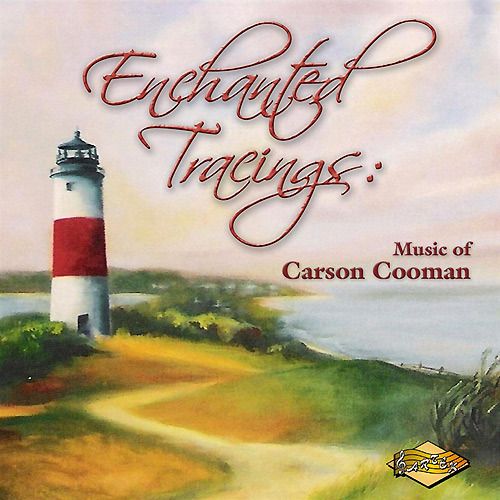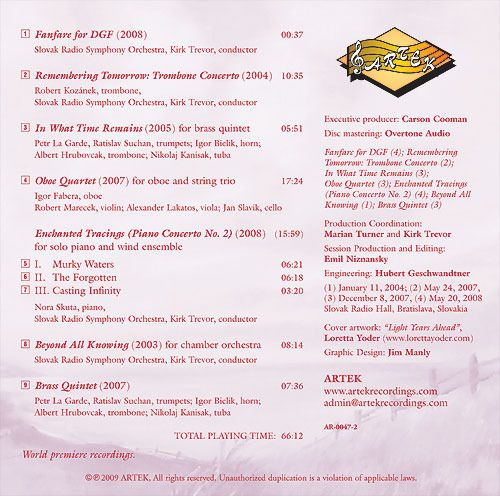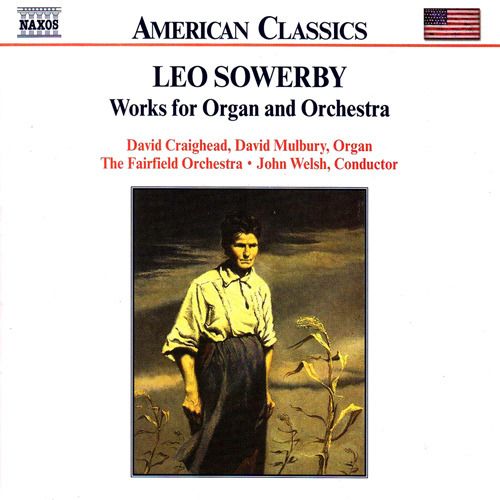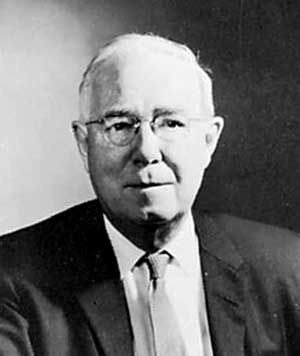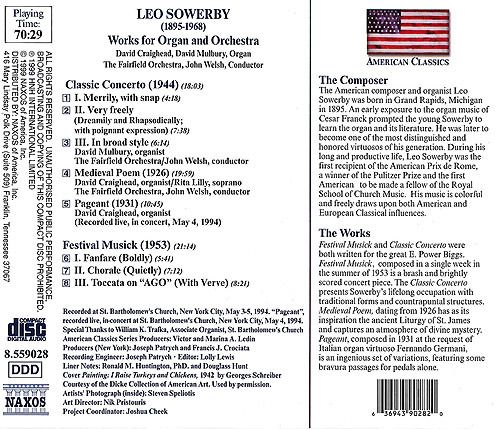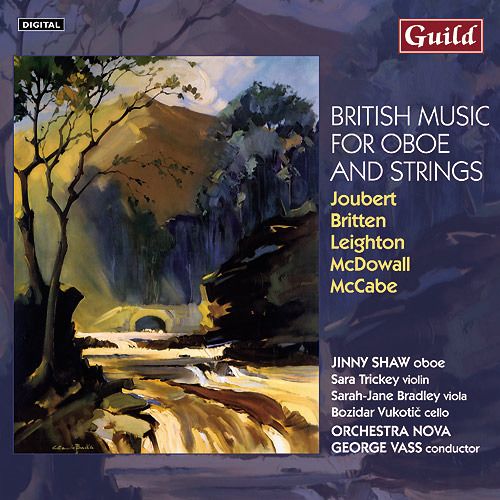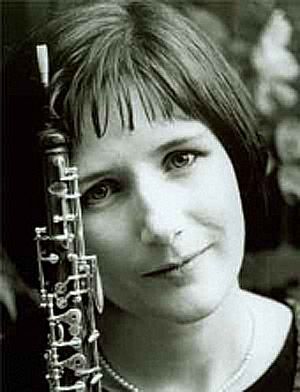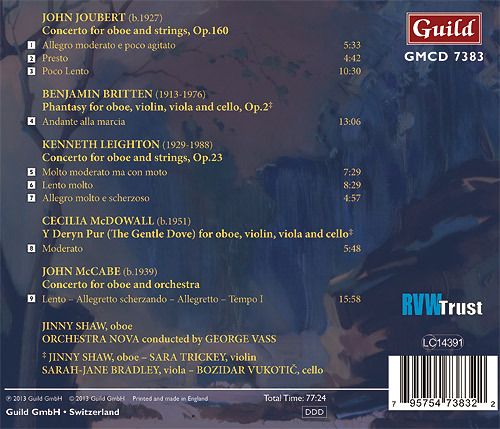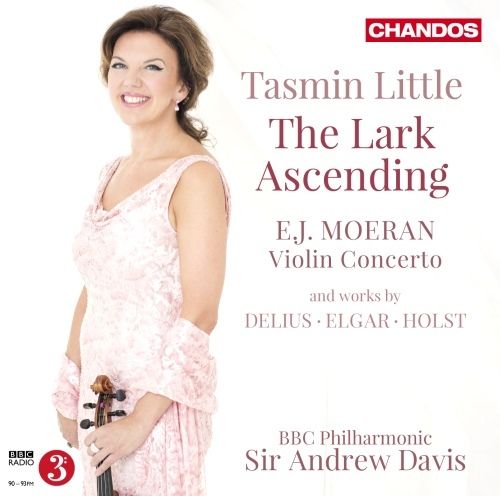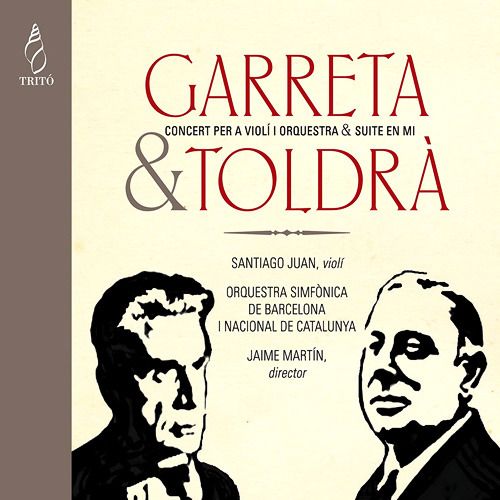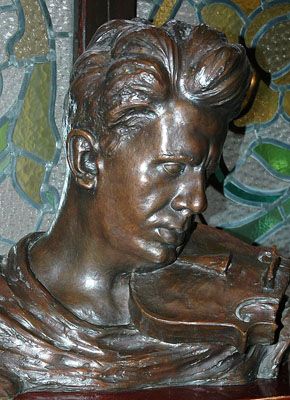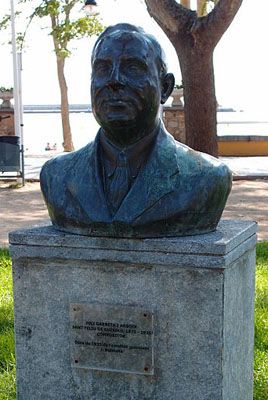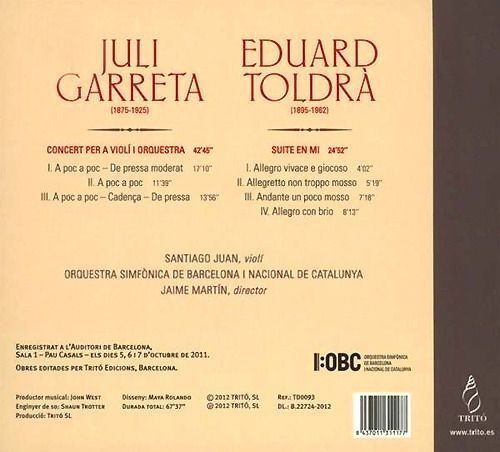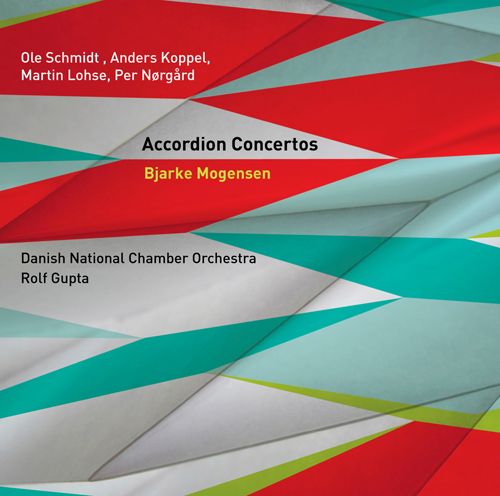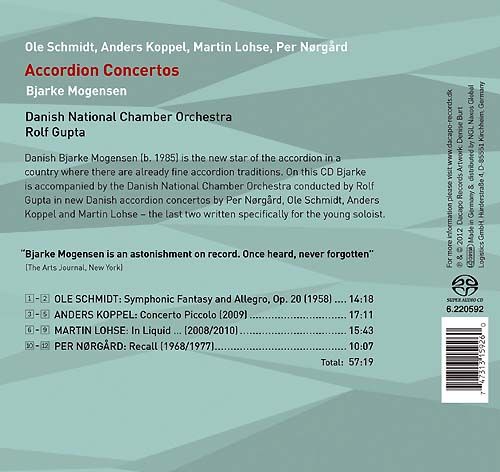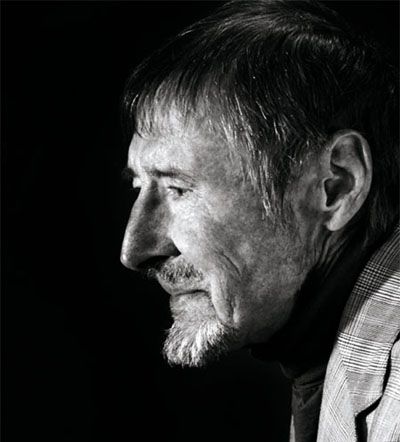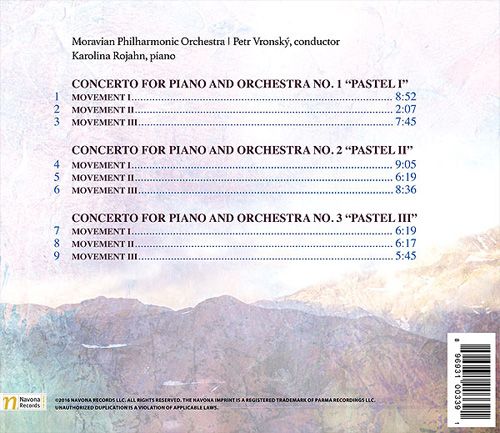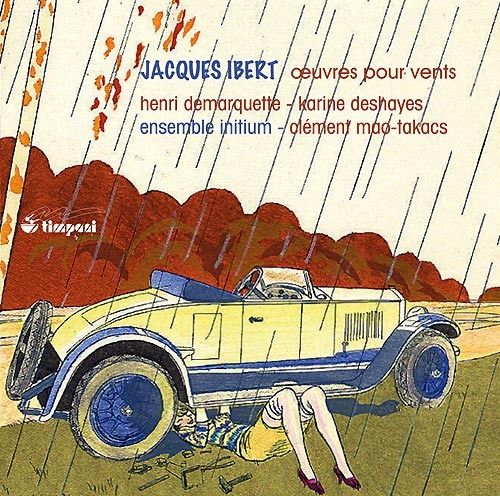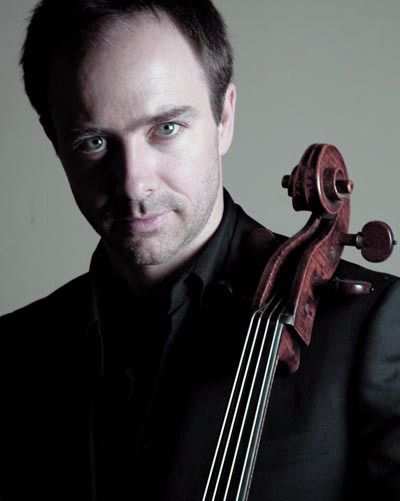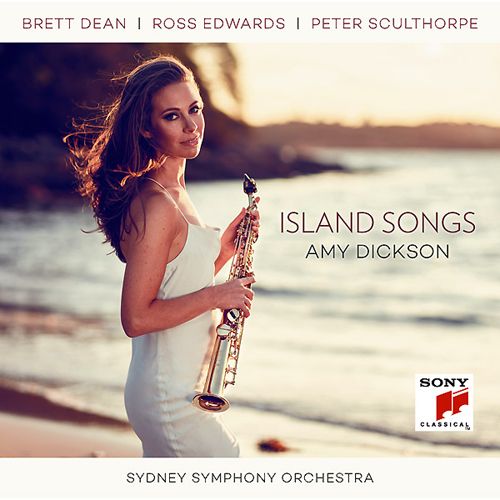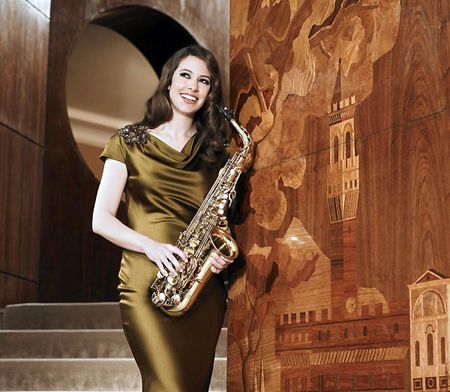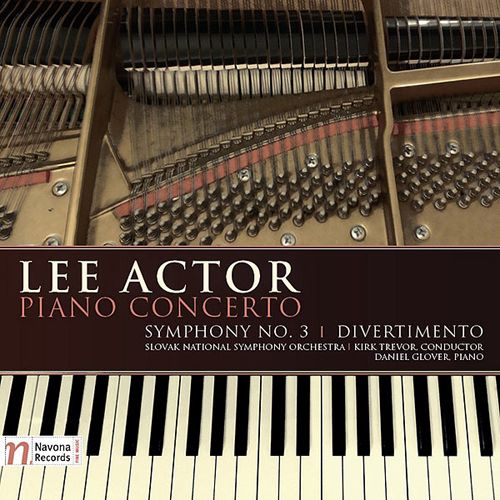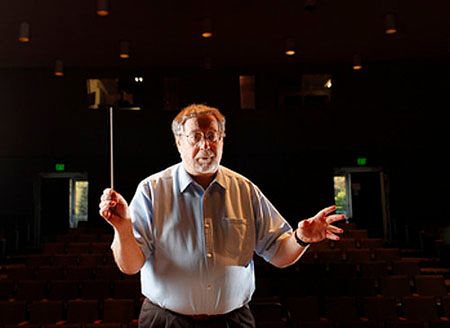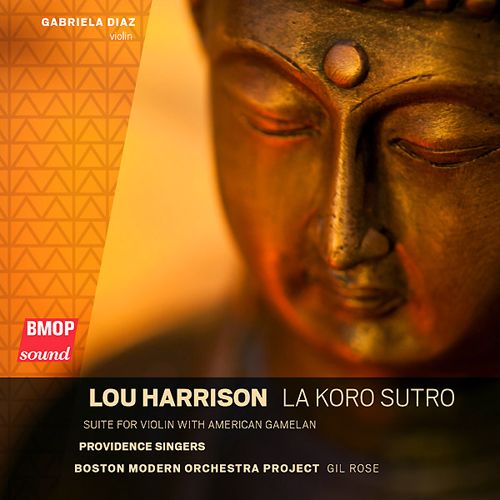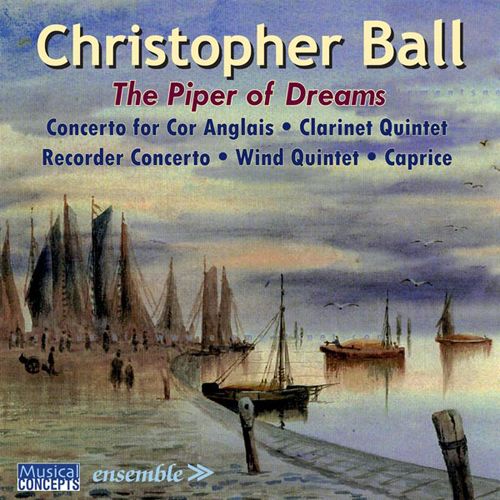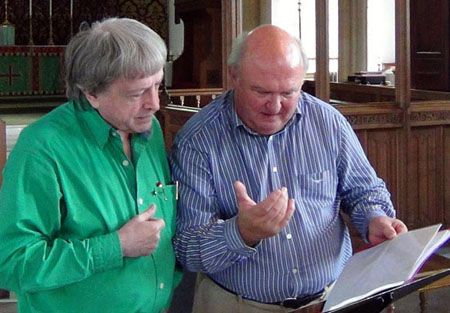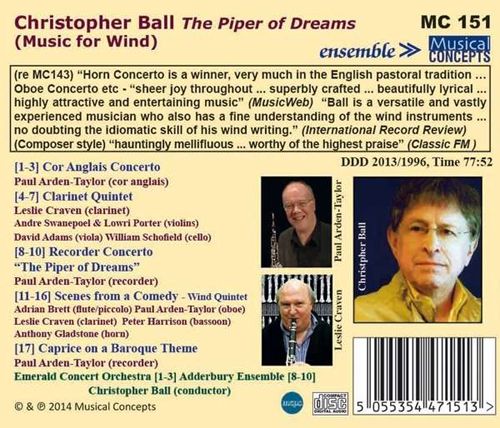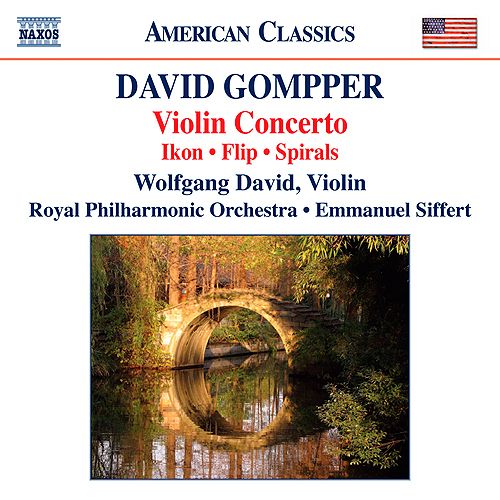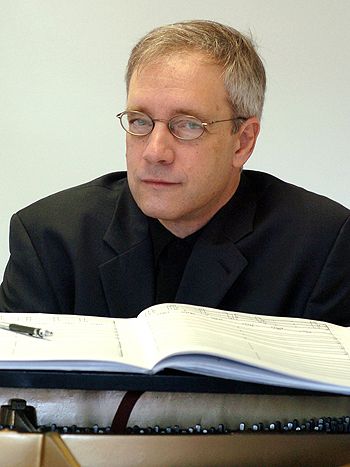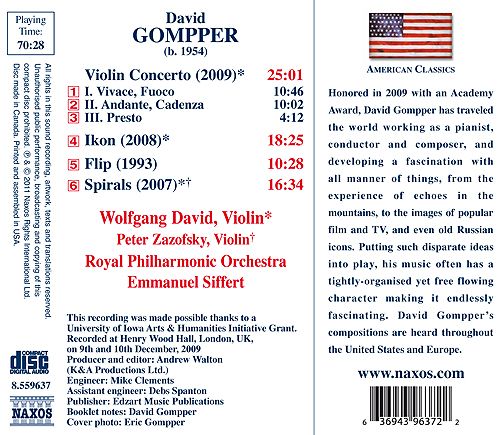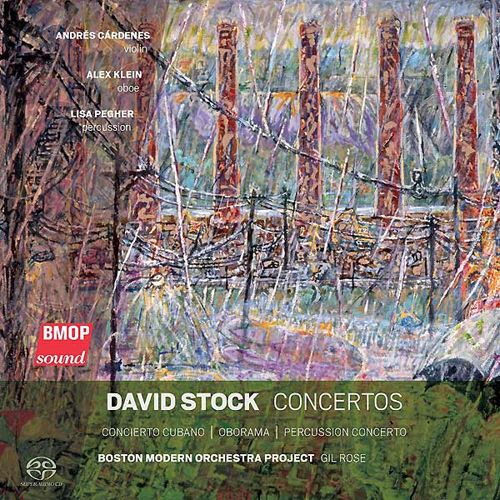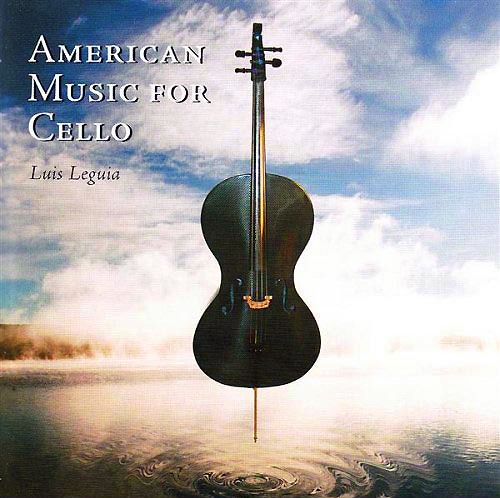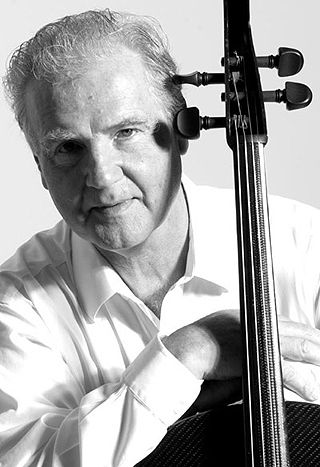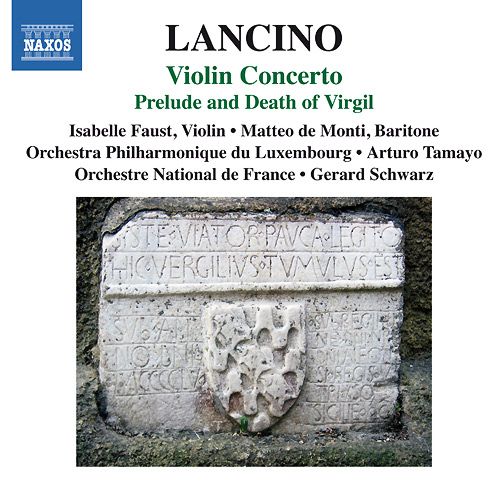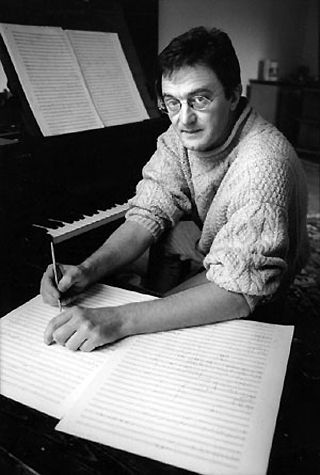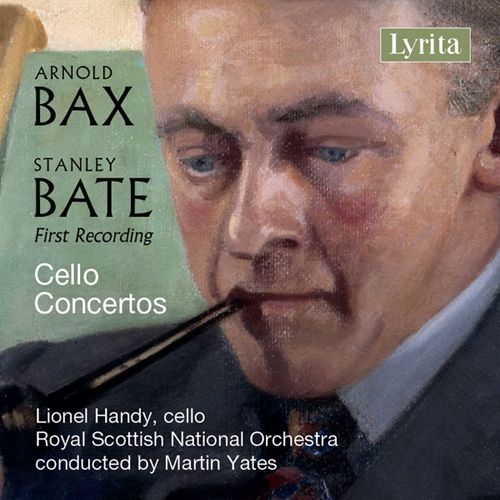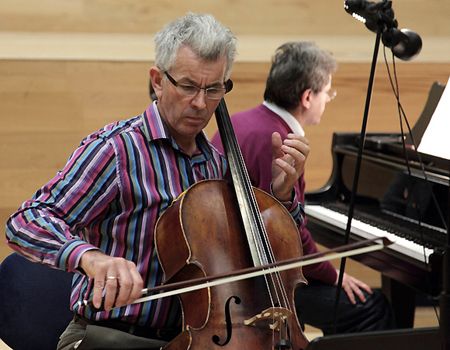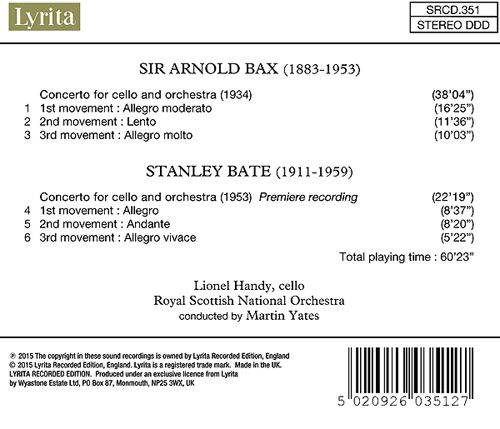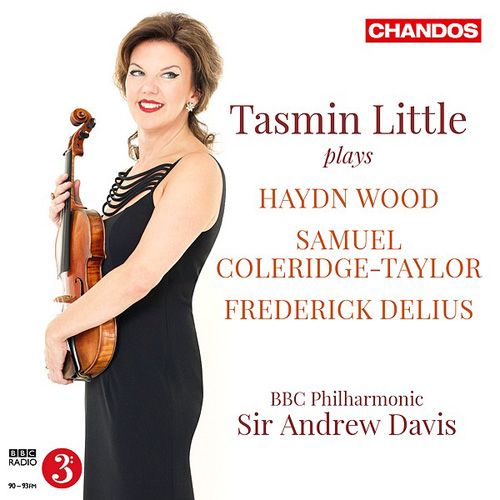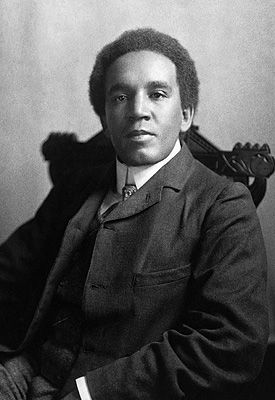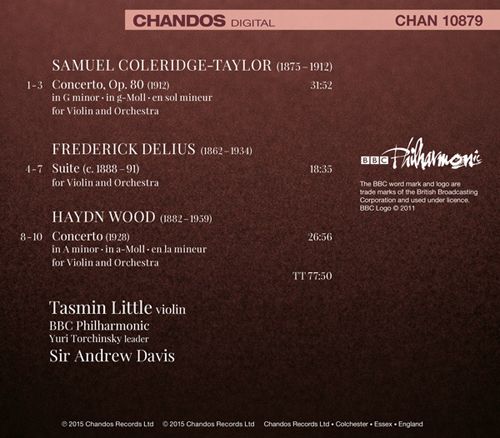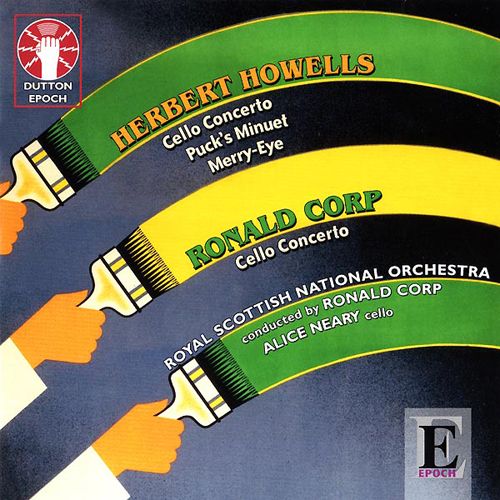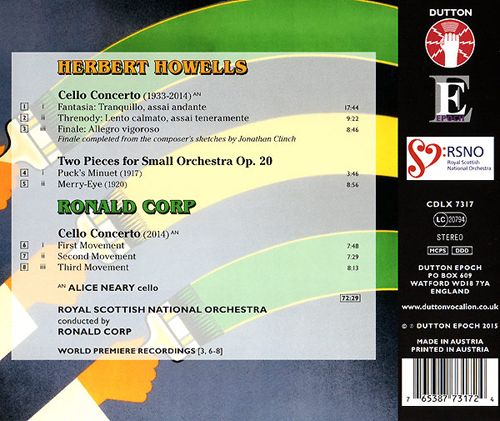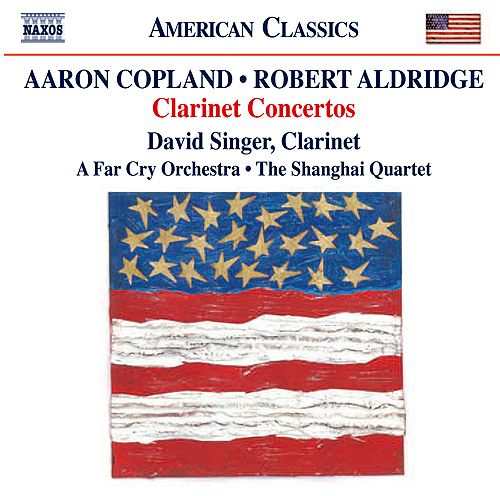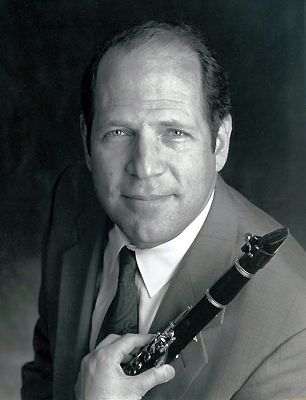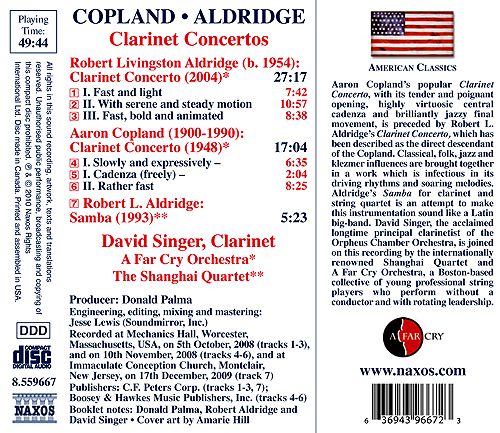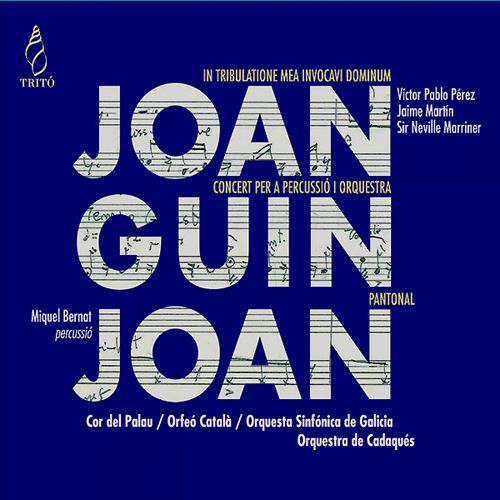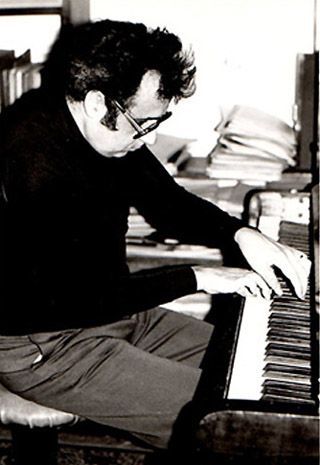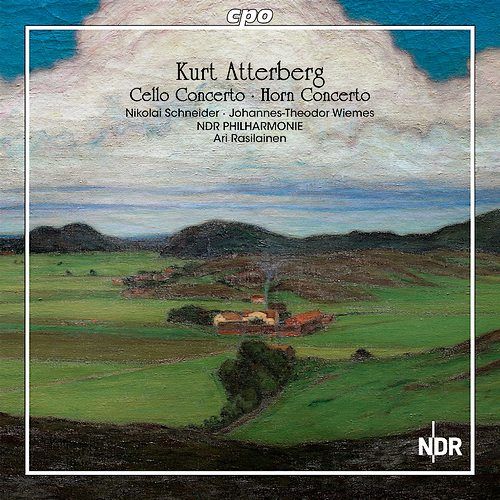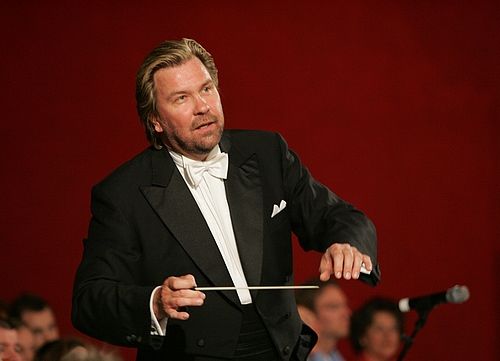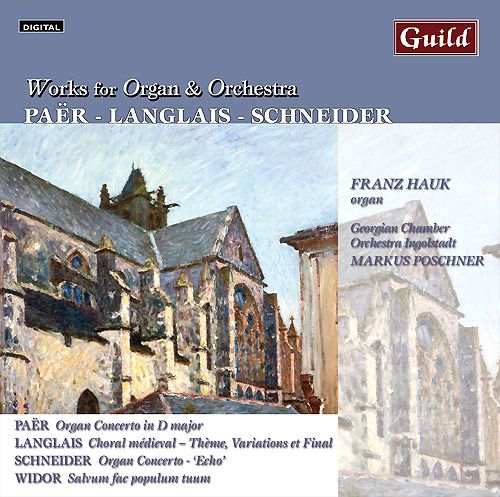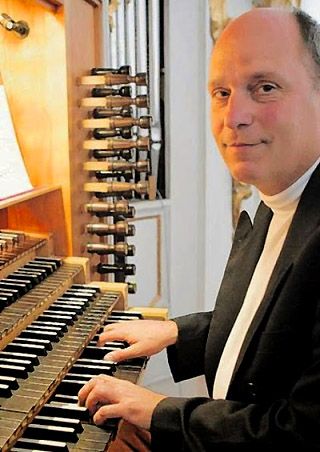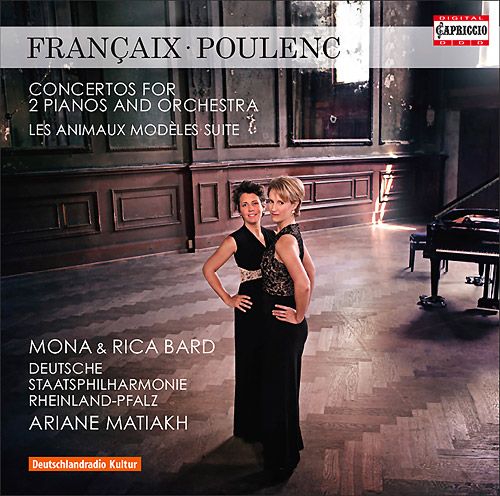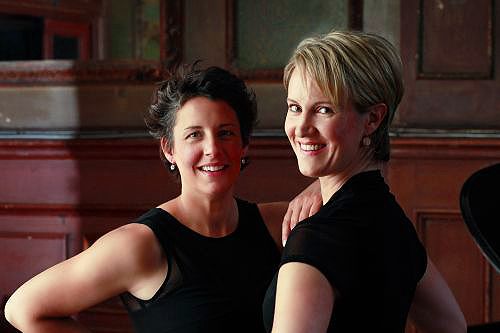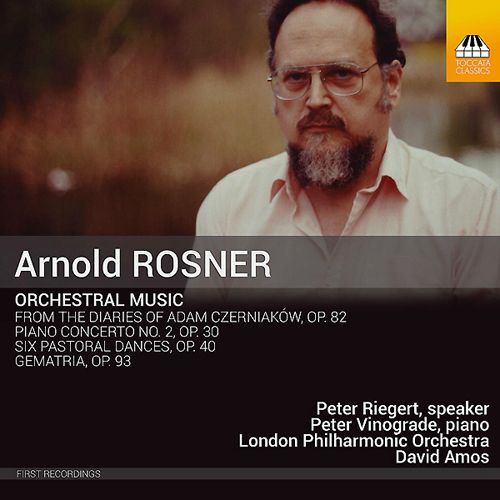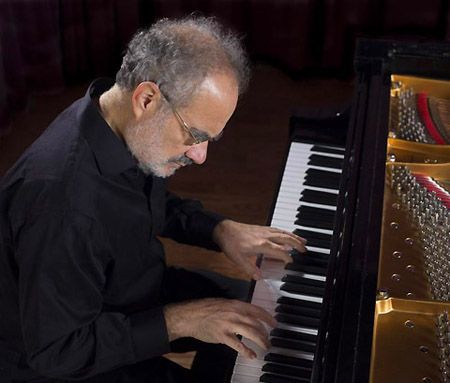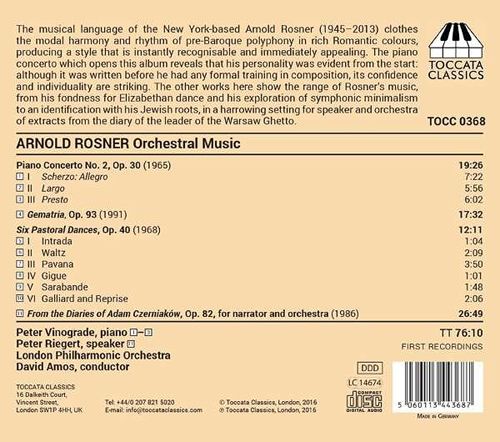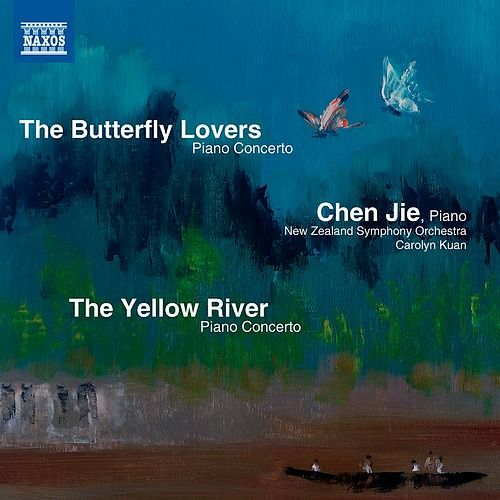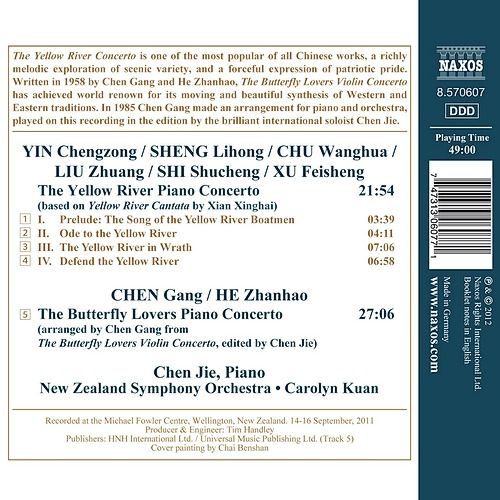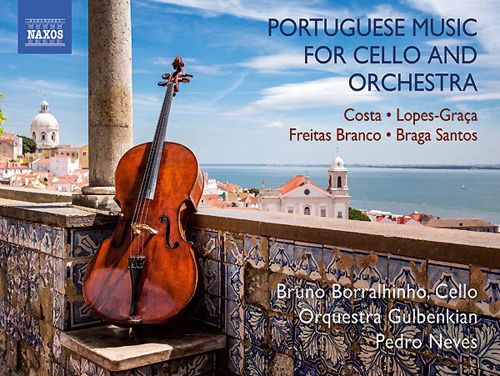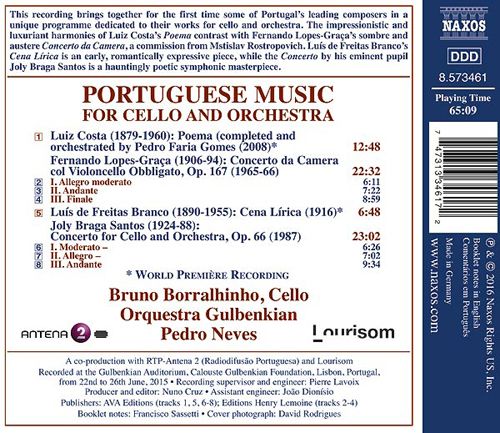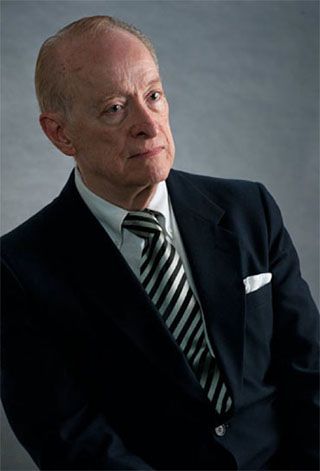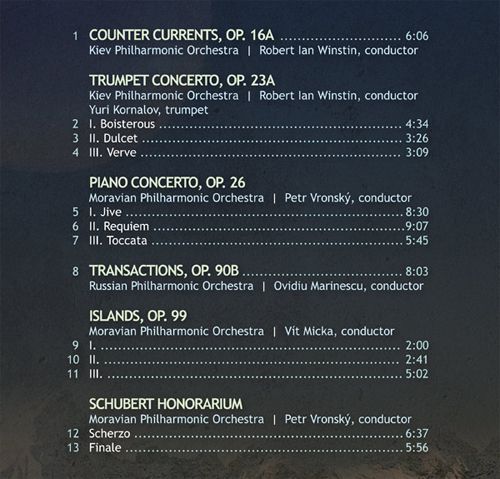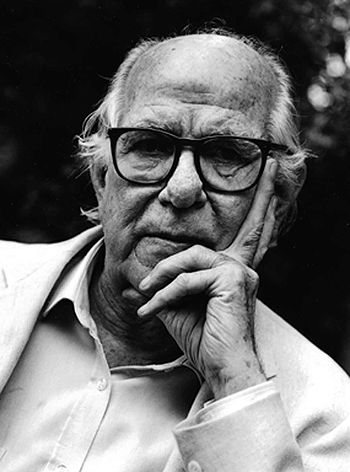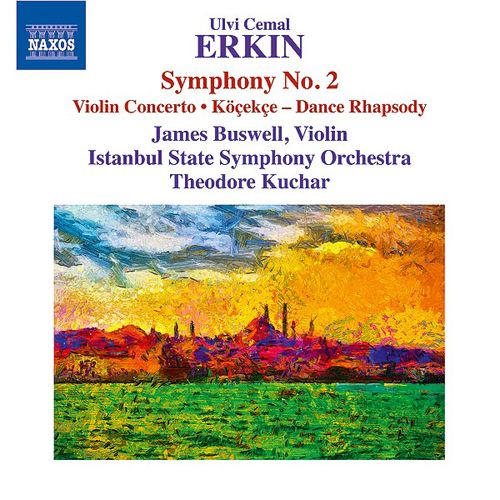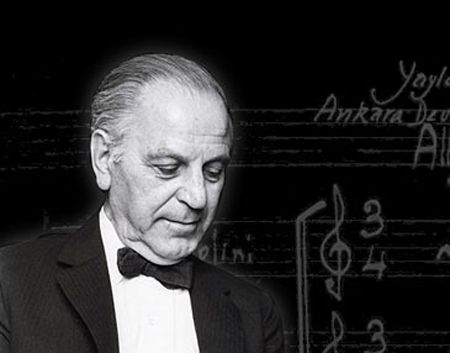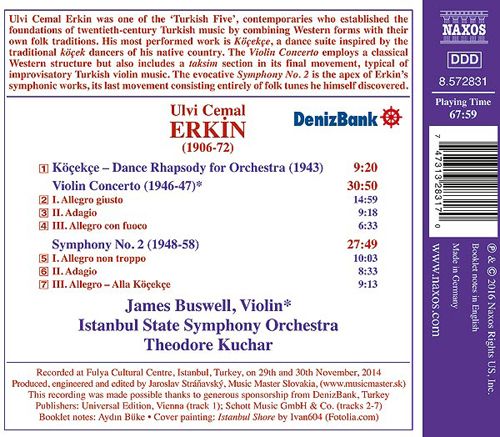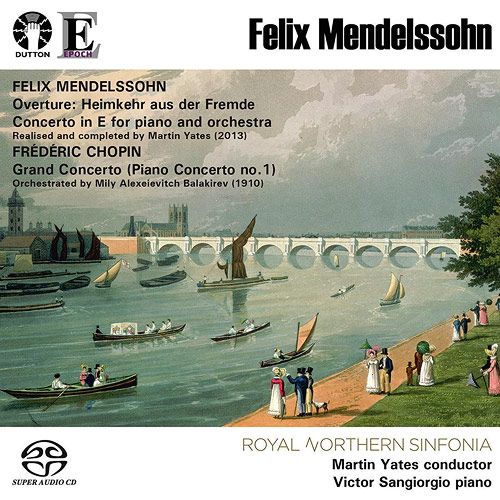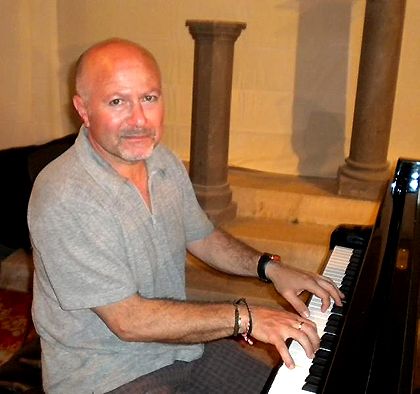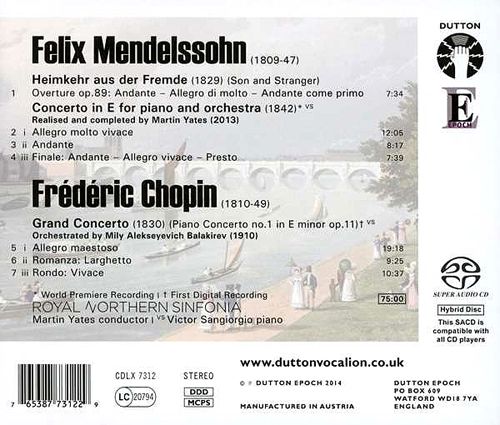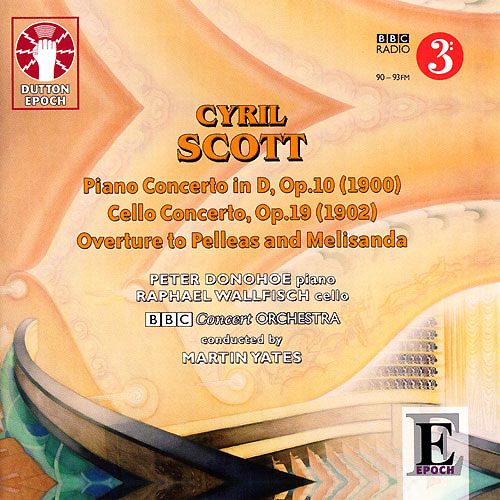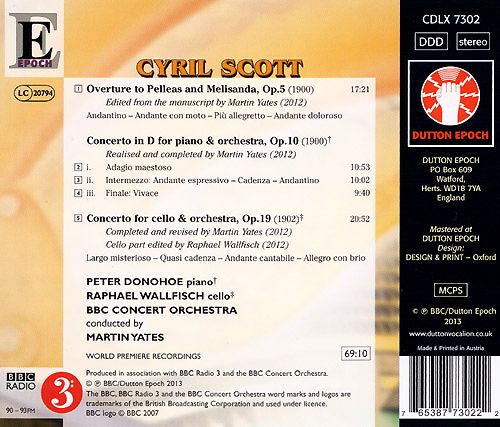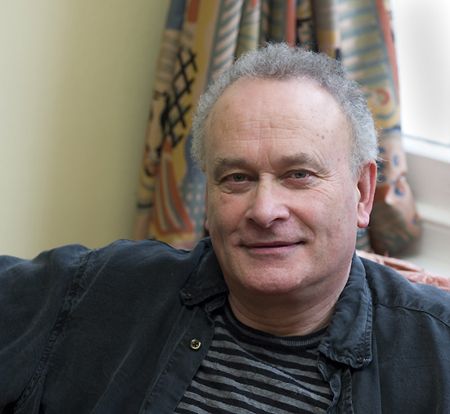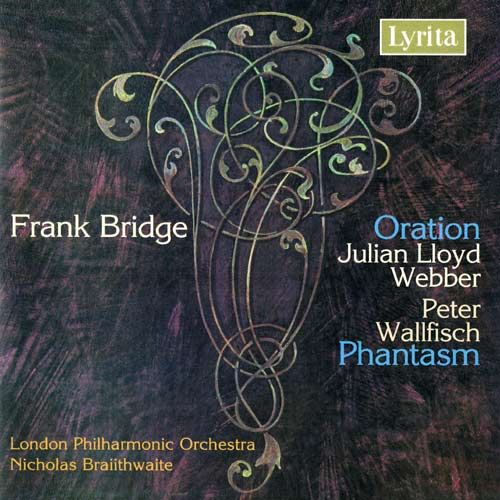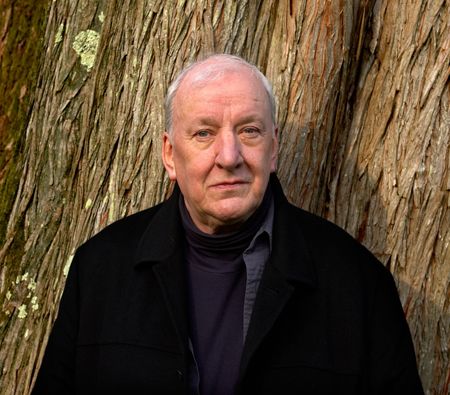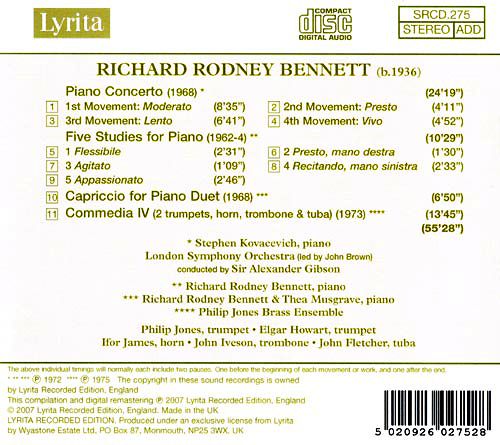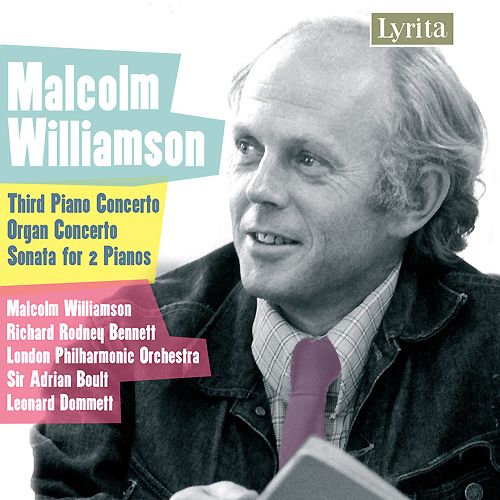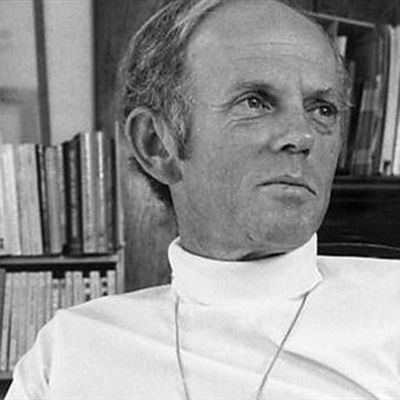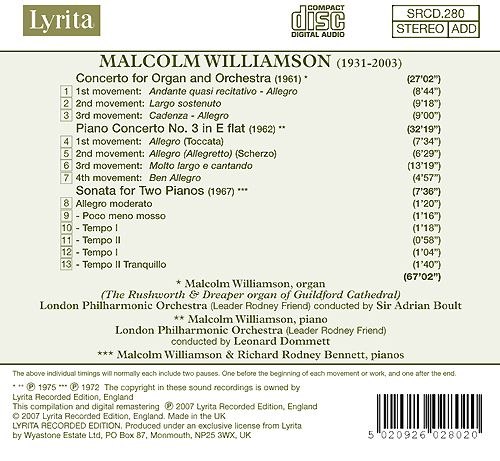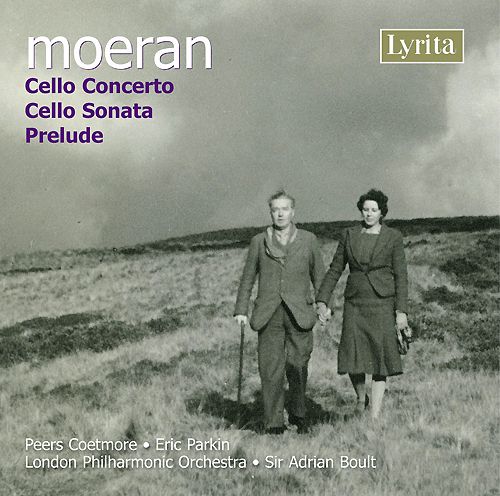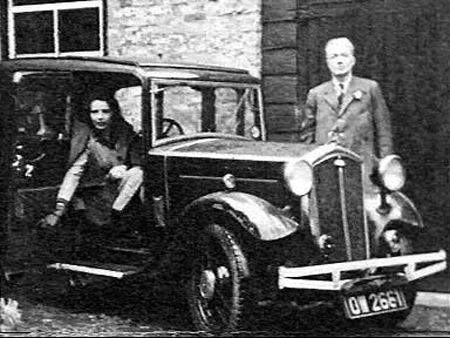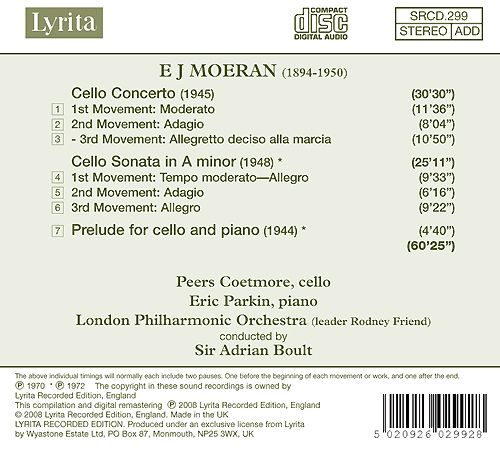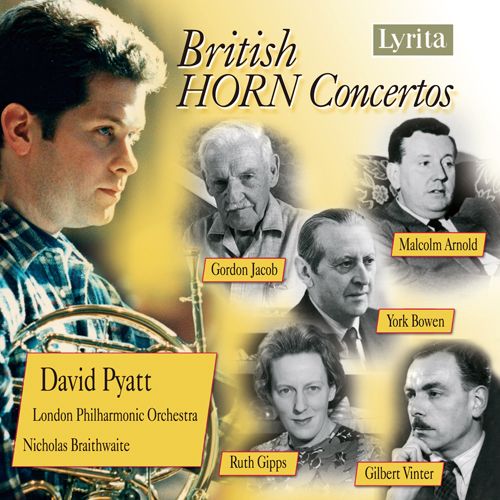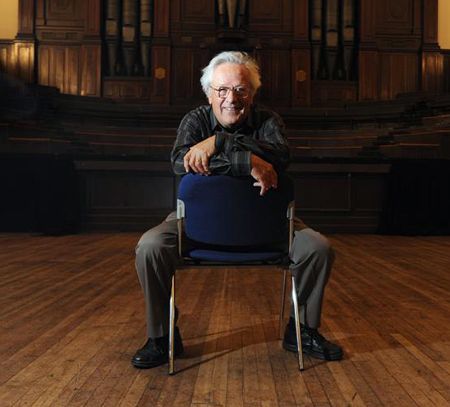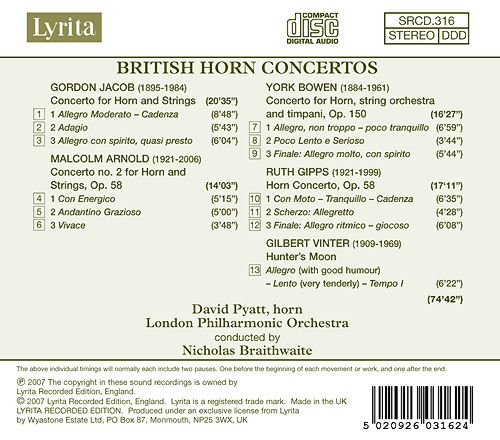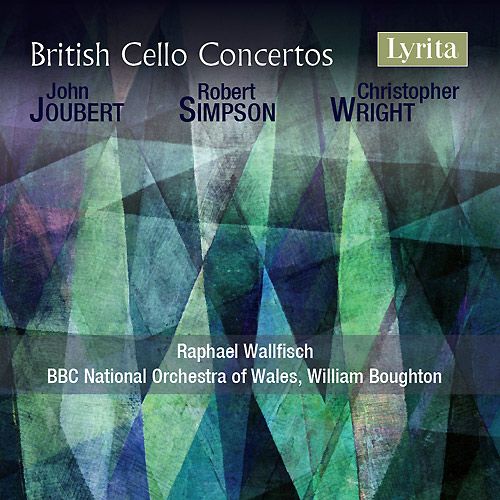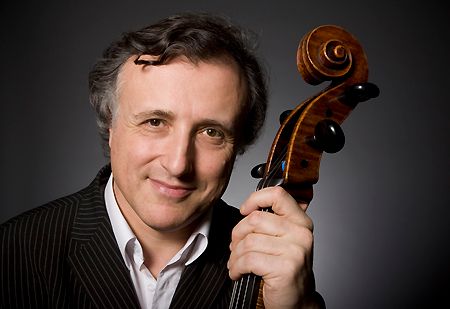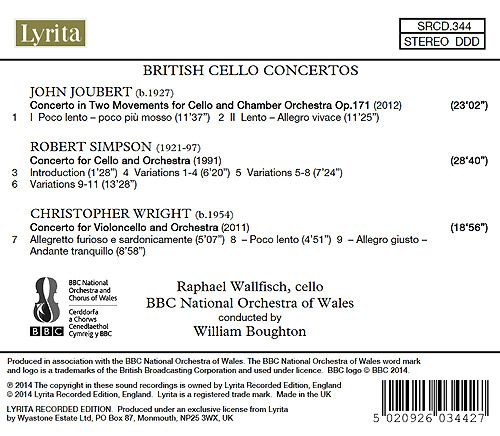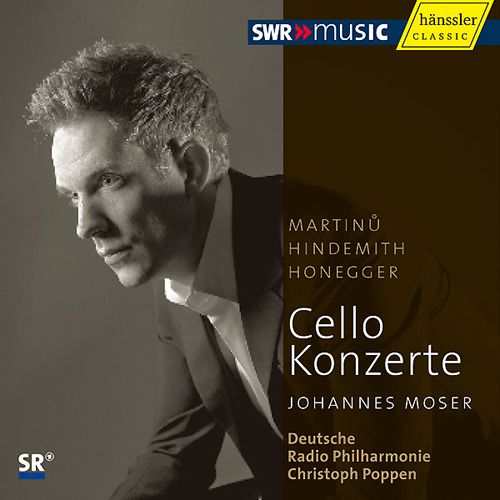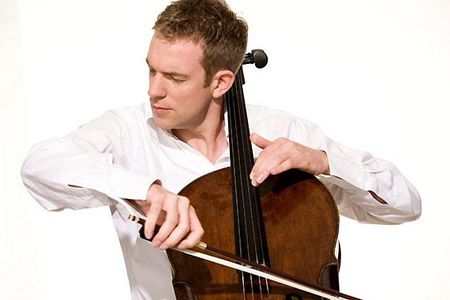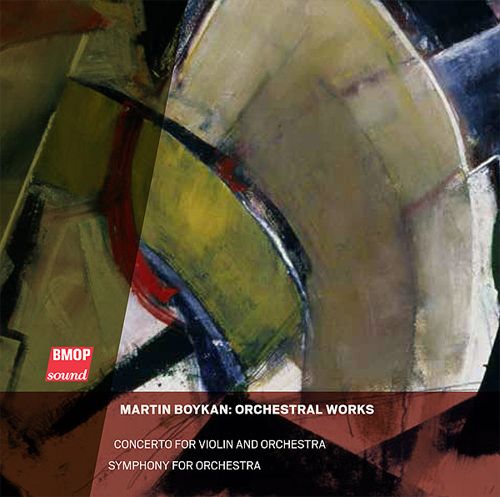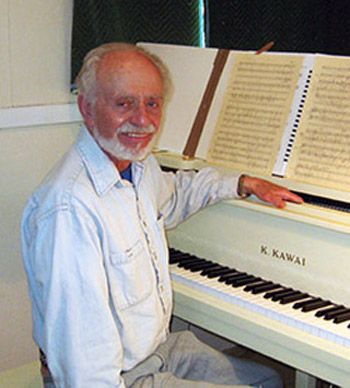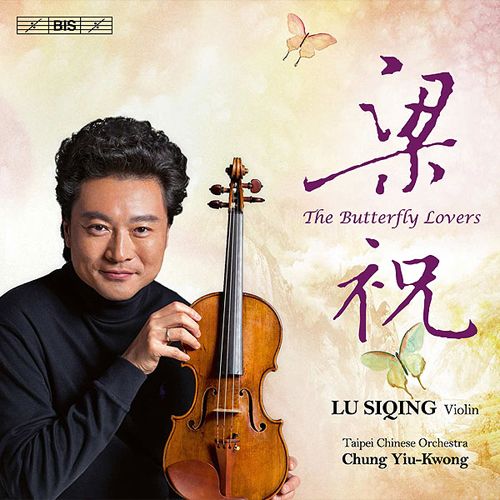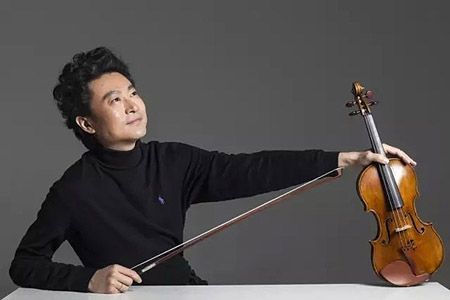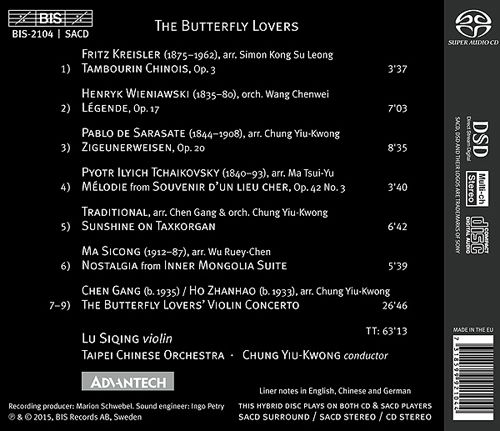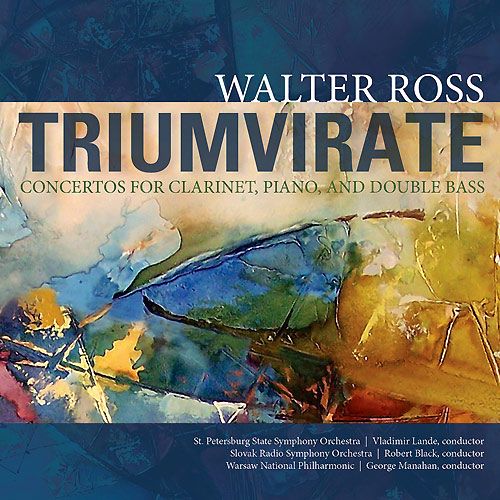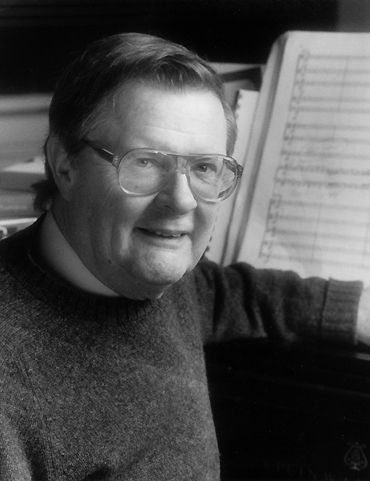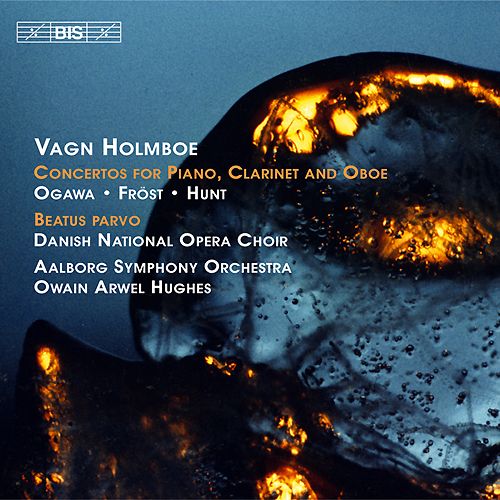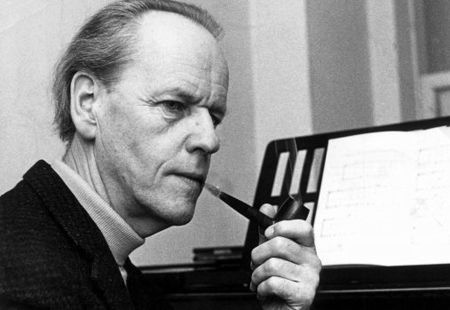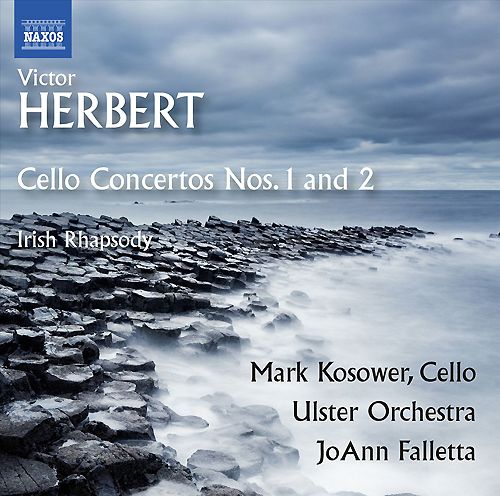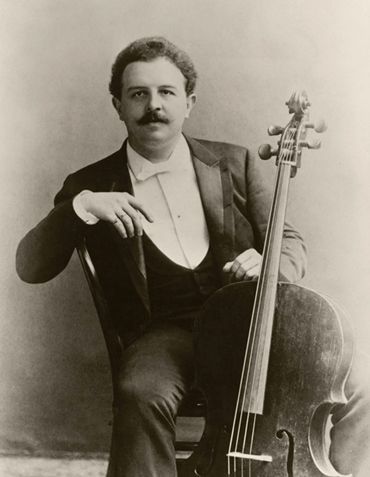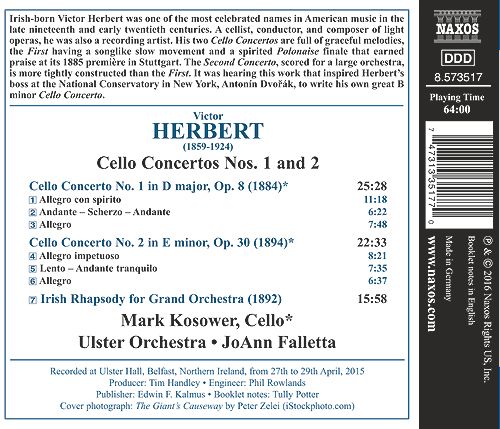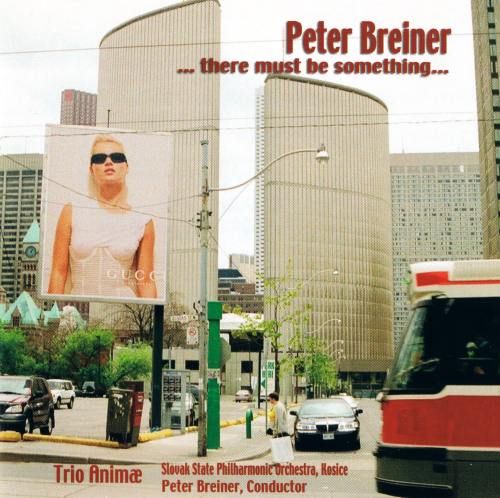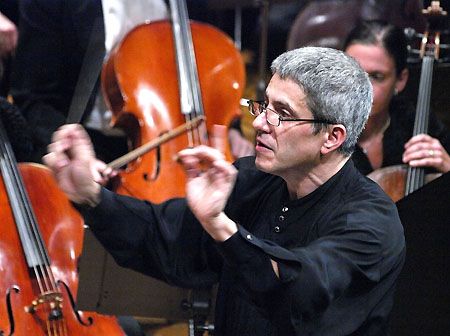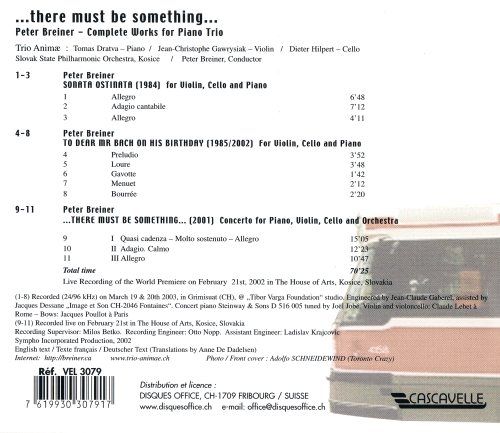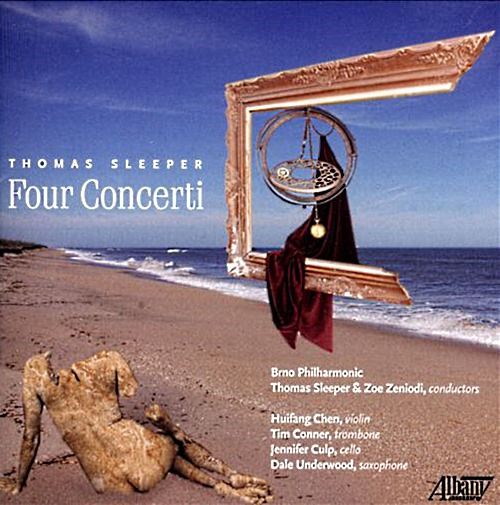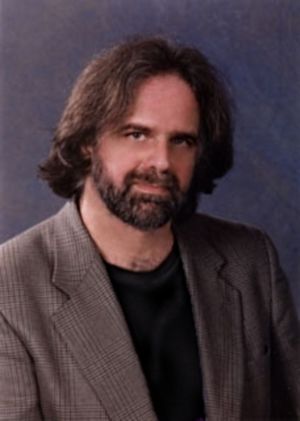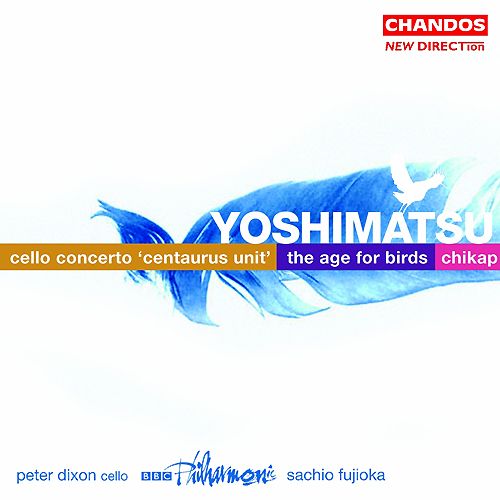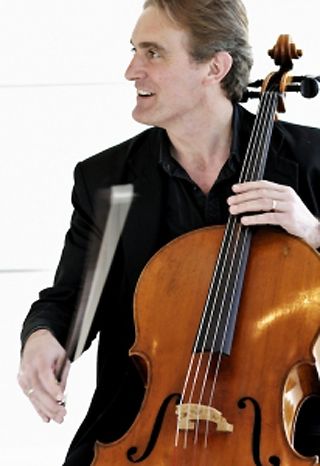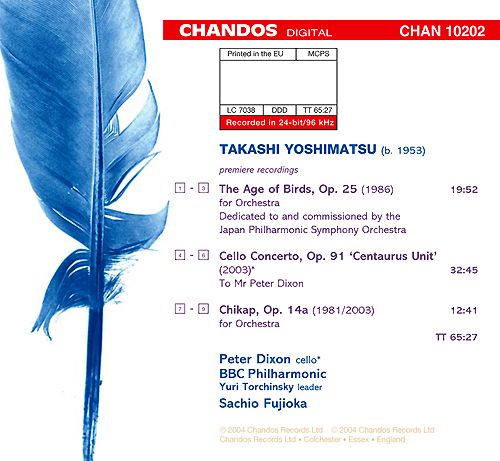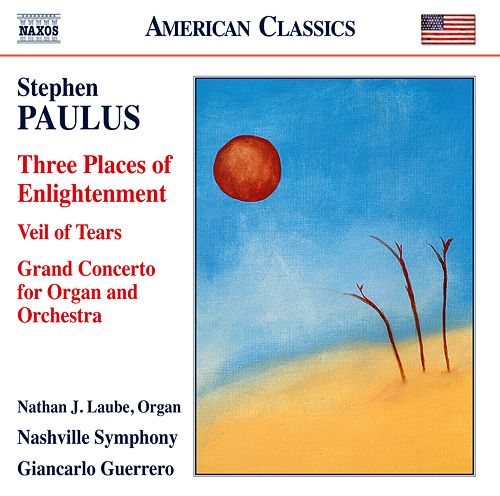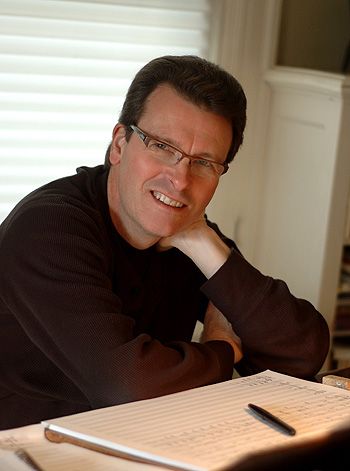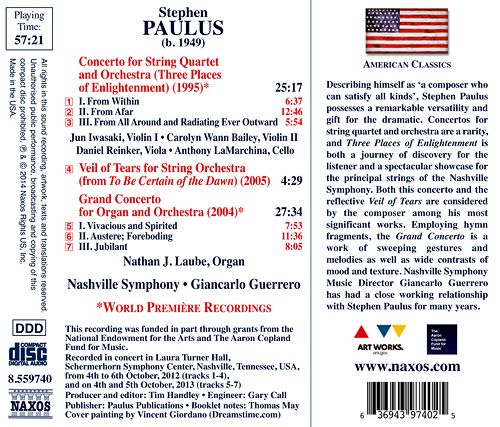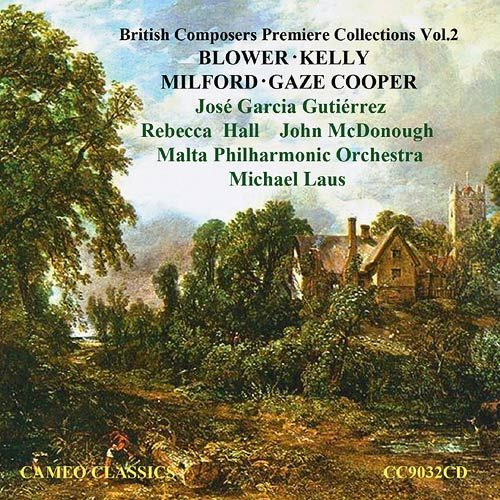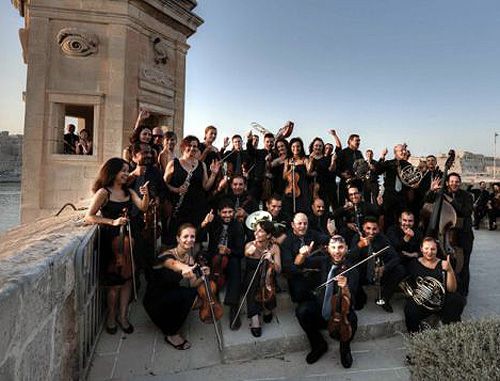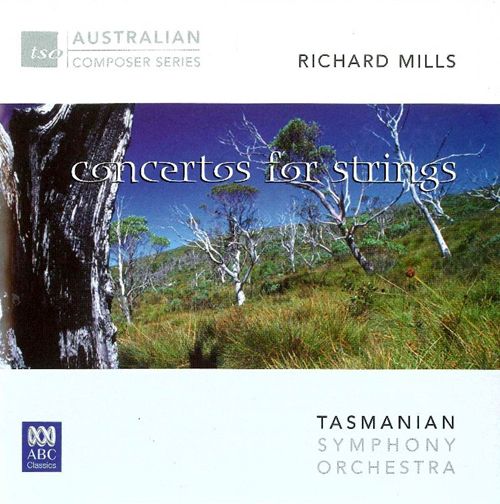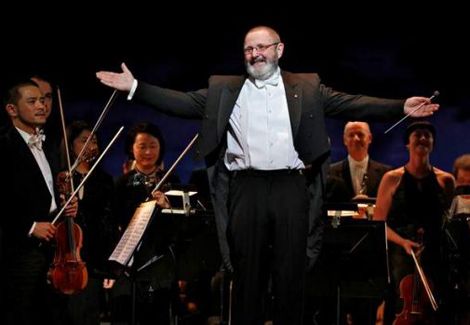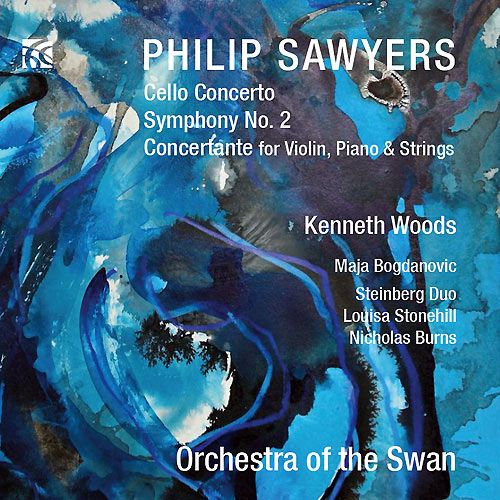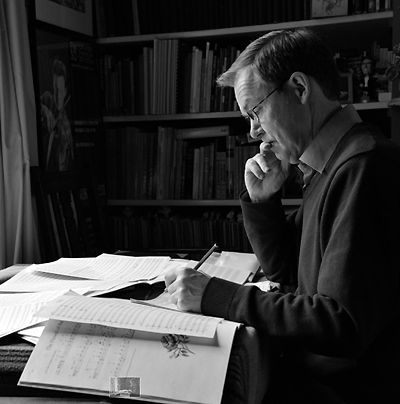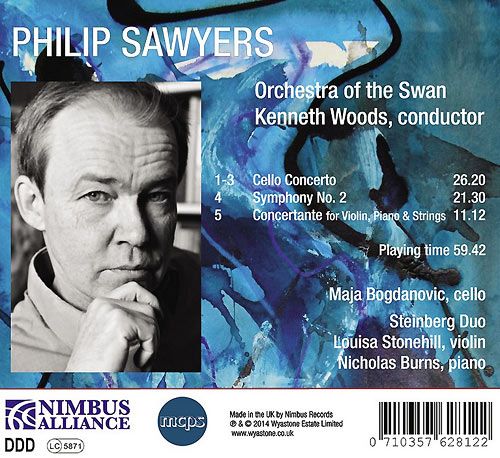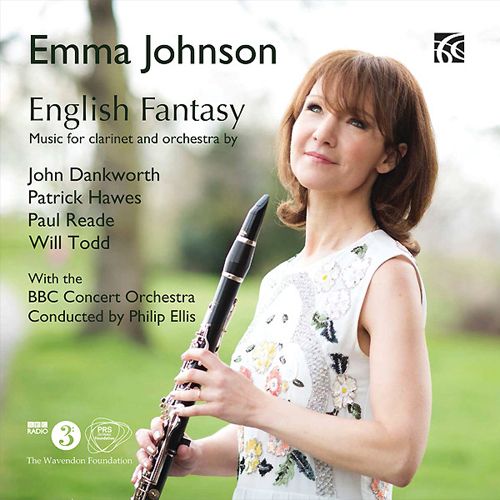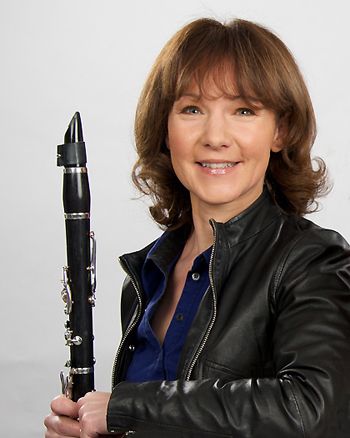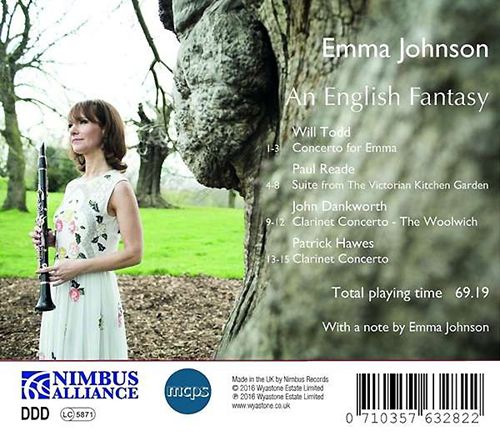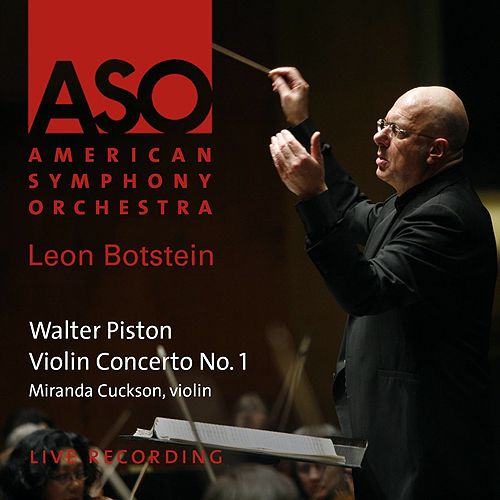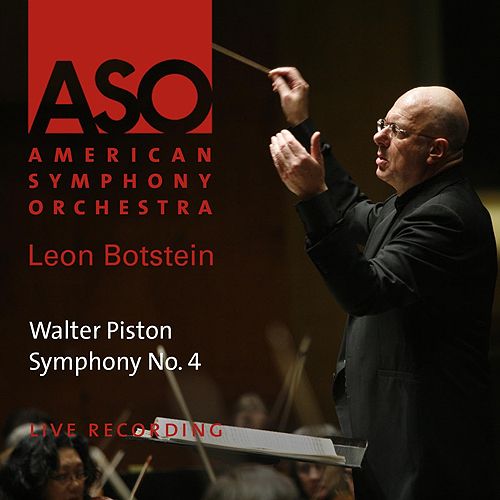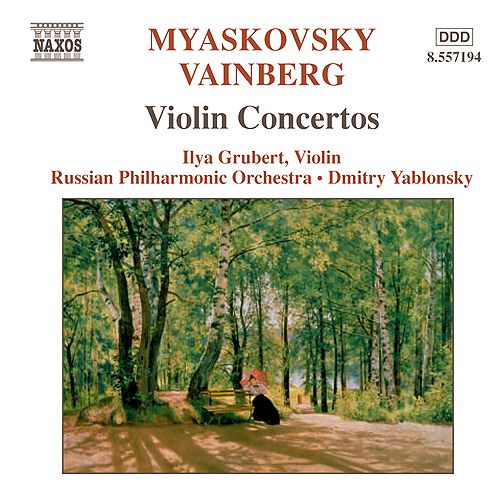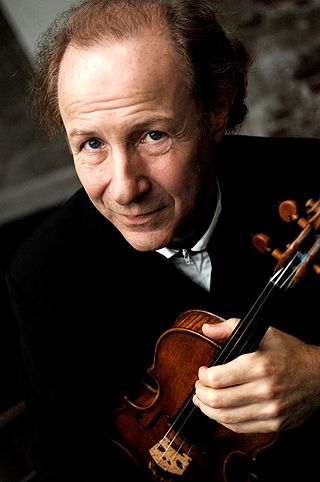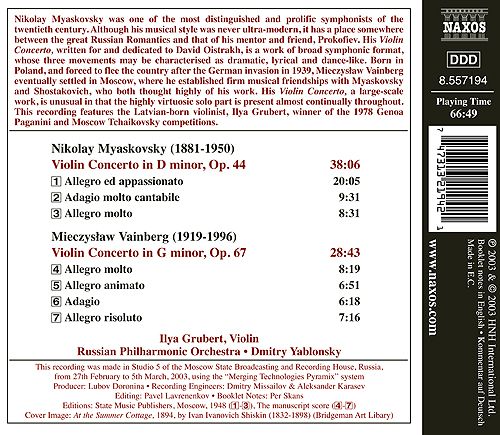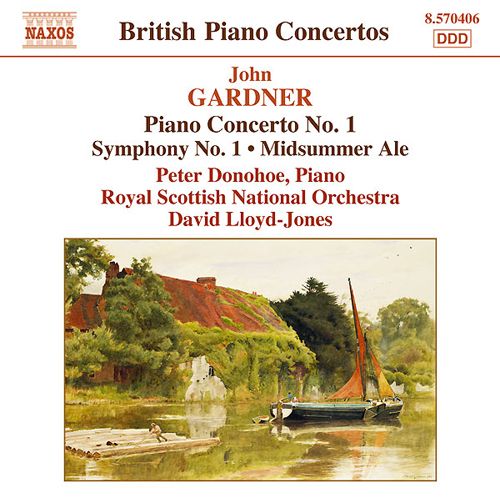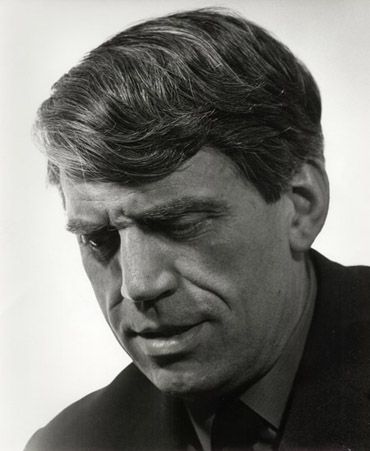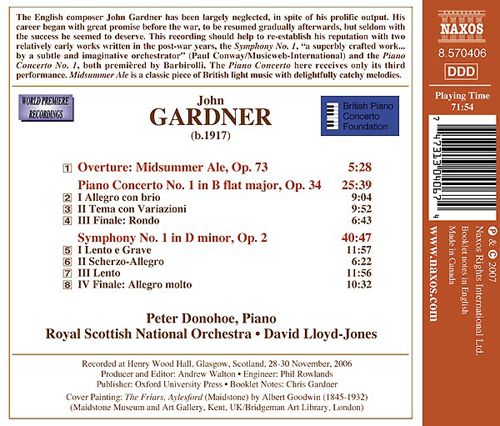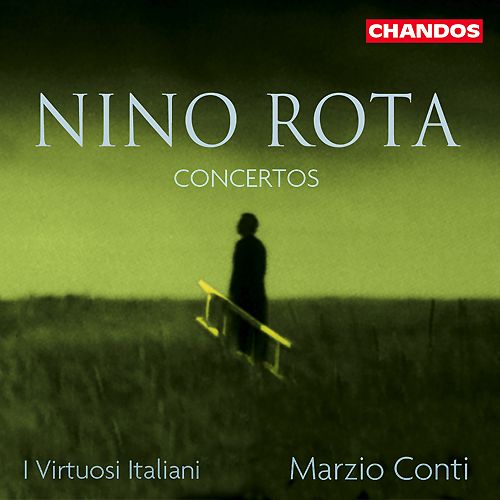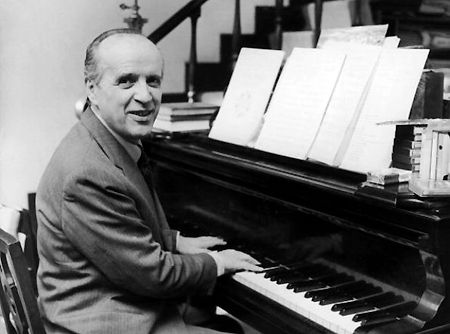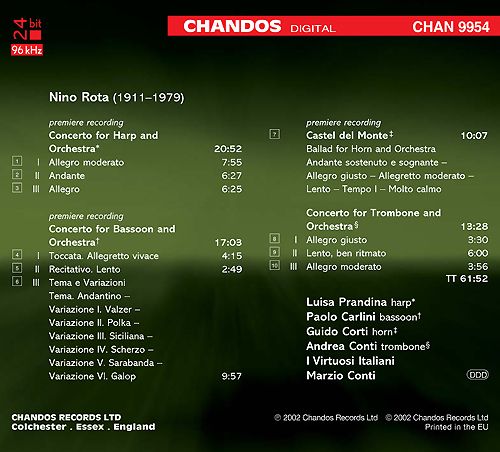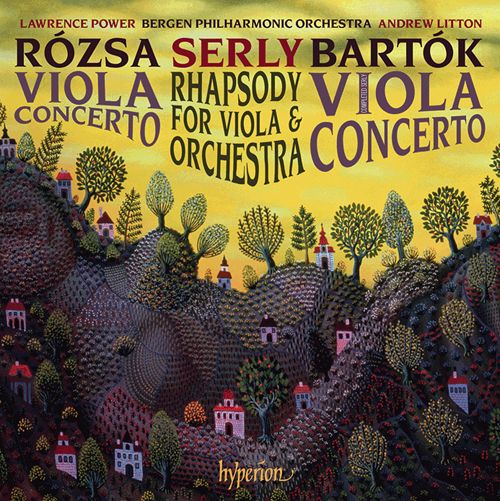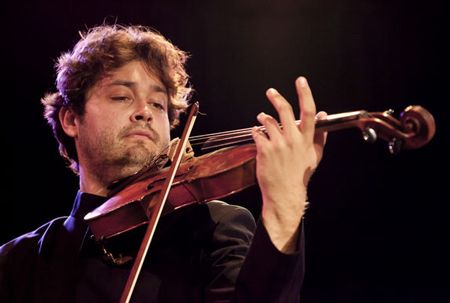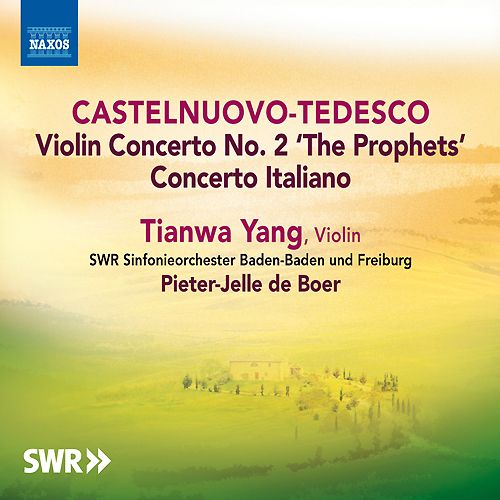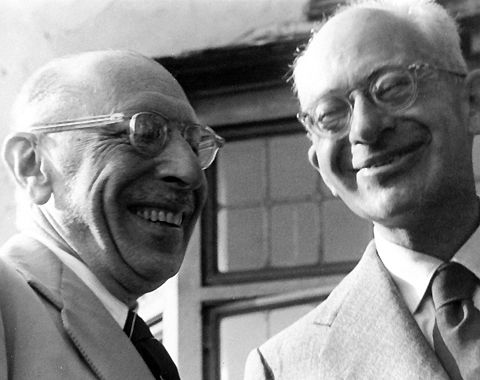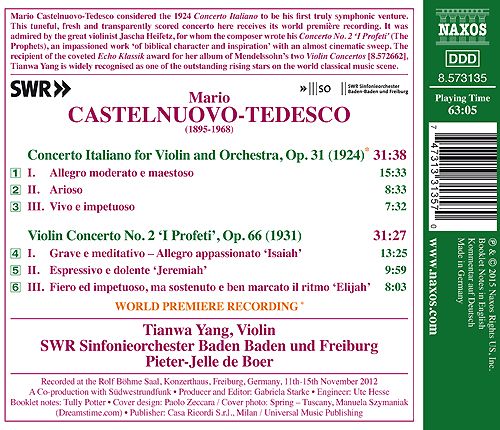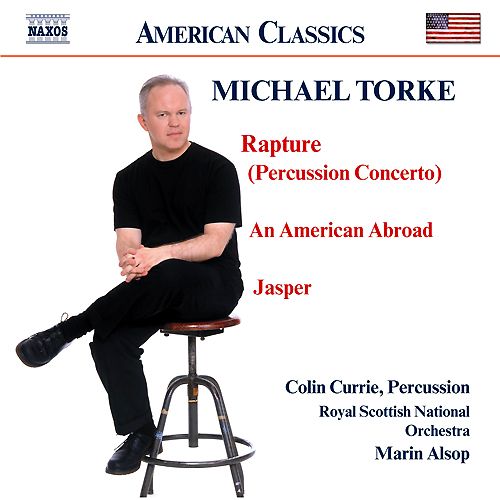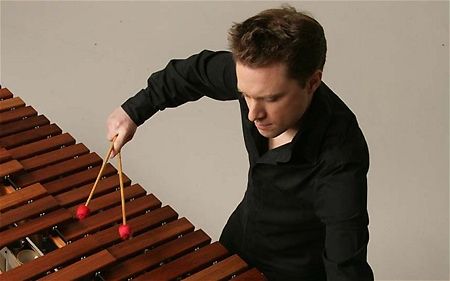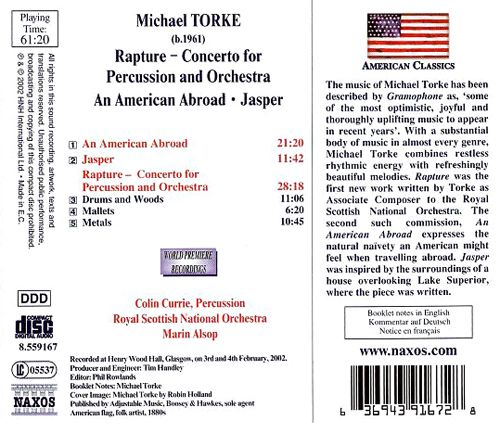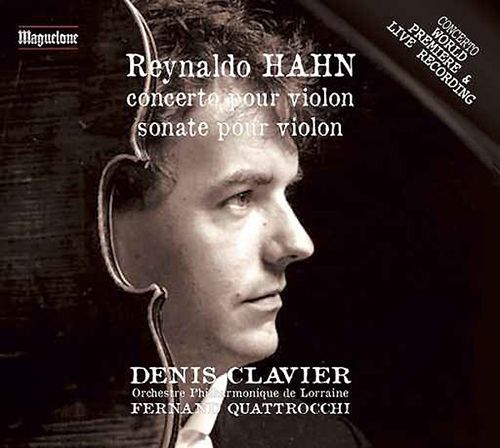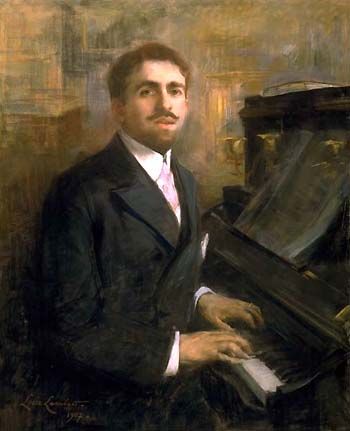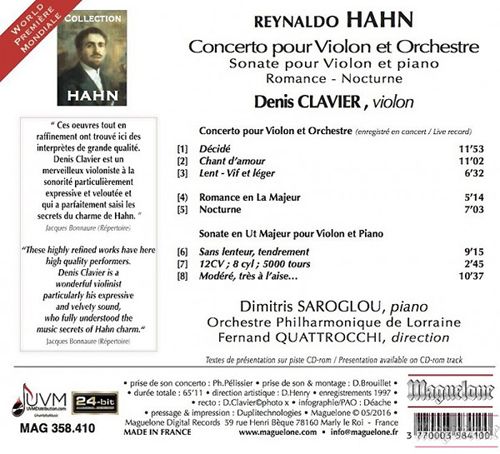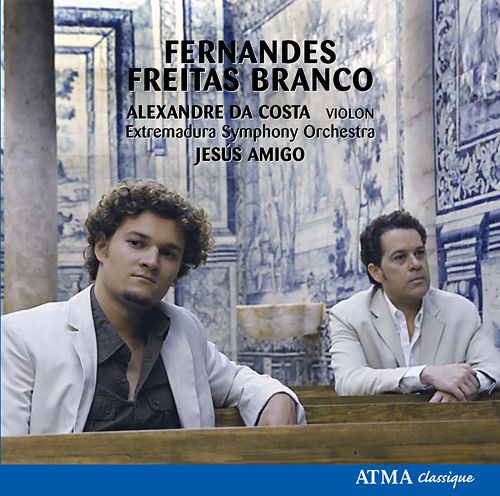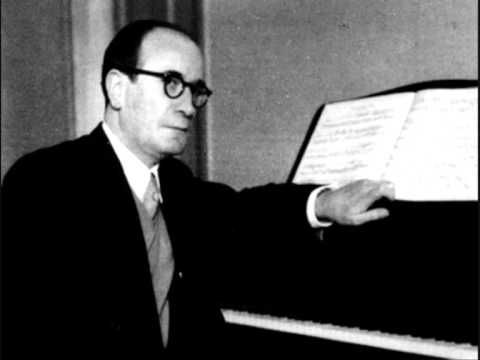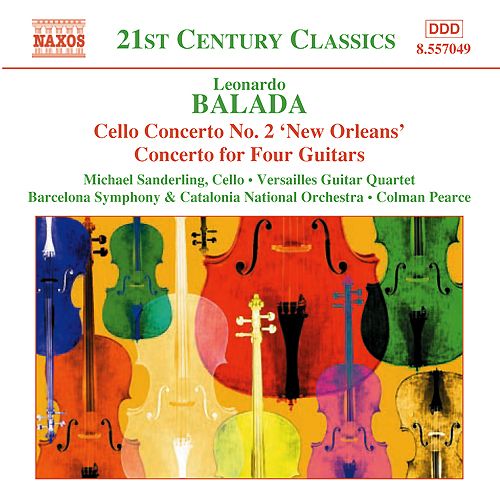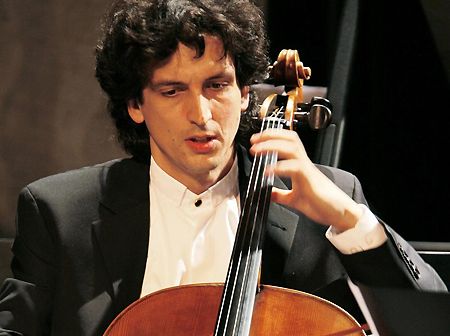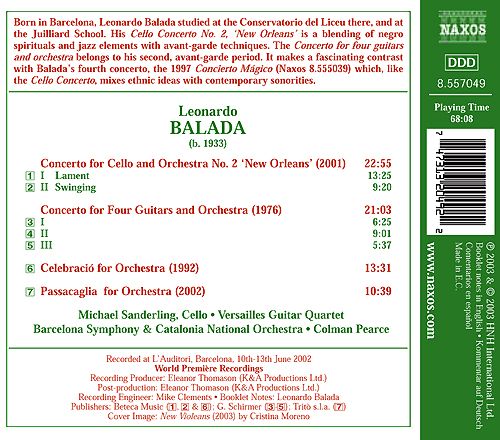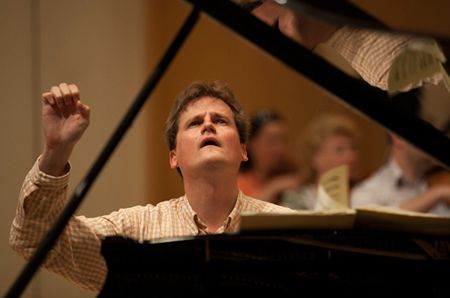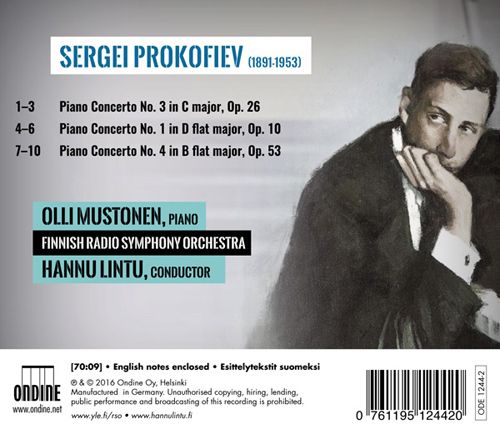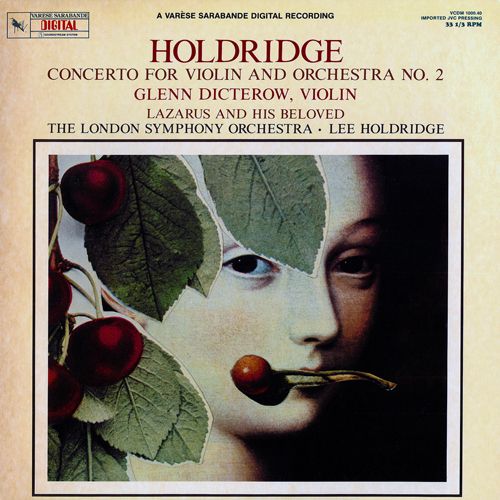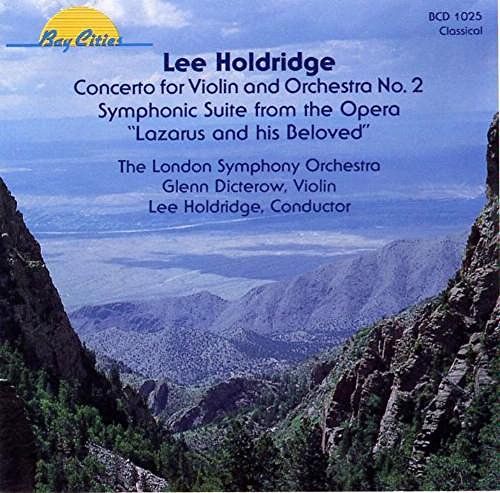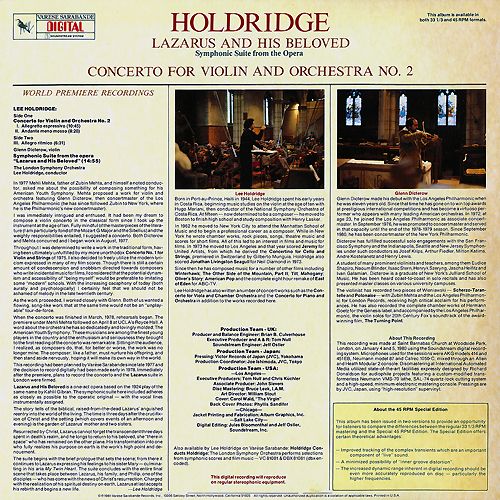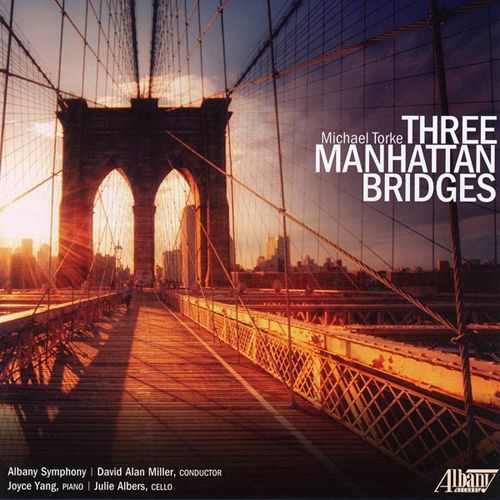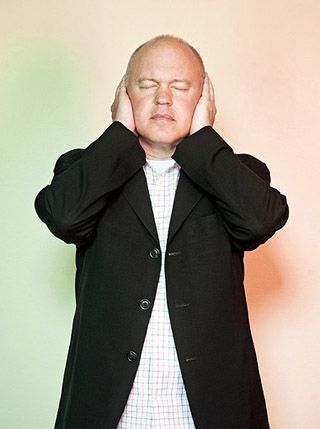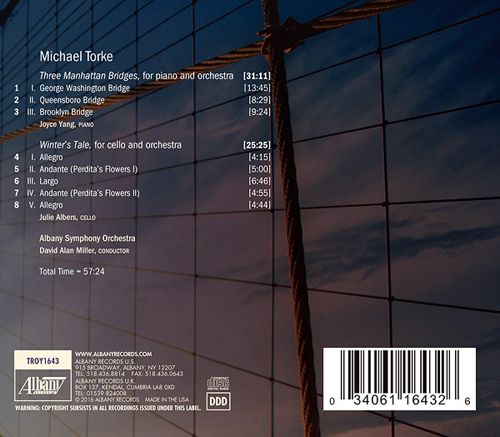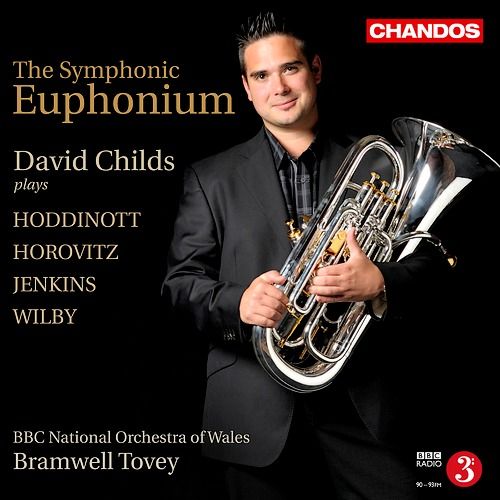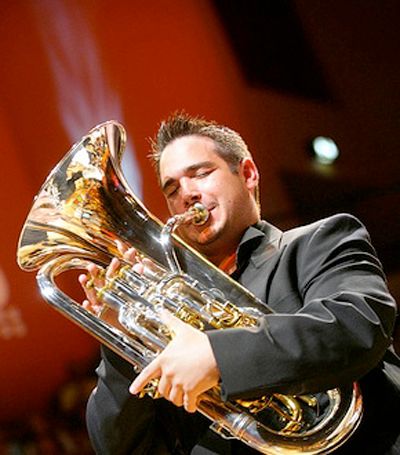No.394
20th Century: Tonal
Violinist Philippe Graffin couples his recording of Britten�s bittersweet
Violin Concerto with Delius�s Violin Concerto, the latter given special
resonance by being played from the perspective of Albert Sammons�s extensively marked
playing copy of the solo part. To both works, Graffin brings a personal view and warmly
expressive playing. The programme is completed by a world premiere recording of Robin
Milford�s delightful The Darkling Thrush for violin and orchestra, a sort of
wintertime Lark Ascending after a Thomas Hardy poem. Dating from 1928, this gloriously
atmospheric piece proves to be a worthwhile discovery that all enthusiasts for inter-war
English orchestral music will want to explore.
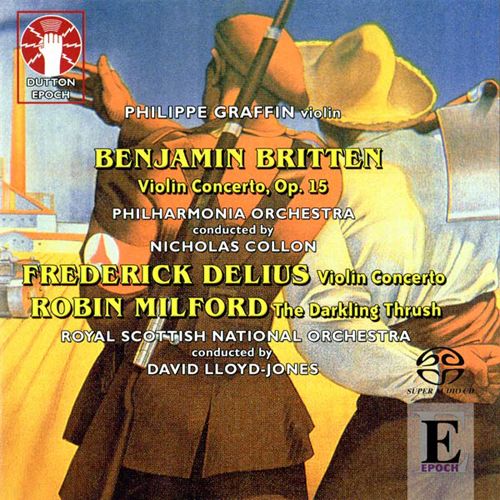
Music by Frederick Delius, Robin Milford & Benjamin Britten
Played by the Royal Scottish National and Philharmonia Orchestras
With Philippe Graffin (violin)
Conducted by David Lloyd-Jones & Nicholas Collon
"I first encountered Philippe Graffin in his recording of the neglected Violin Concerto by Samuel
Coleridge-Taylor (review) and subsequently in a very good recording of the Elgar Violin Concerto
(review). It�s germane to recall the Elgar disc because for that recording Graffin went back to Elgar�s
original thoughts for the solo violin part. In doing so he ignored the alterations that were made at
the suggestion of Fritz Kreisler prior to the first performance and which were incorporated into the
published score. As we shall see, Graffin has done something pretty similar for one of the works
on this present disc.
His programme contains a novelty in the shape of the first recording of The Darkling Thrush by
Robin Milford. This short tone poem for violin and orchestra was inspired by a poem by Thomas
Hardy which is printed as part of Lewis Foremen�s booklet essay. During the most recent session
in the MusicWeb International Listening Studio this was one of the discs that we auditioned and
we listened to the Milford work. Our initial verdict on the piece was that it couldn�t quite break
free from Vaughan Williams and, specifically, from the shadow cast by The Lark Ascending.
Perhaps that�s unsurprising since VW and Holst were Milford�s teachers at the Royal College of
Music. More to the point, in The Lark VW had given what is arguably the definitive musical
portrait of a bird in flight. However, subsequently I�ve had the opportunity to listen to the piece
in more detail and to read Hardy�s lines. As a result, while I can see that first-time listeners are
likely to hear the influence of The Lark I think that Milford�s piece is rather more than a pale
shadow of that masterpiece.
The key difference is that VW�s is a summer piece and, probably, describes a young bird in flight.
Hardy�s poem � and Milford�s music � depicts a wintry scene and, in Hardy�s words, �An aged
thrush, frail, gaunt and small�. Thus The Darkling Thrush opens with some lovely writing for
solo winds and horn over hushed strings; the music is pastoral but the mood isn�t innocent
and the landscape is somewhat chilly and dark in hue. The violin enters at 3:46 and thereafter
is rarely silent until just before the end. The solo writing features a great deal of arabesque-
like writing which bears similarities with The Lark but I think it would have been difficult for
Milford to devise a different way of portraying a bird in flight. Frequently the flute is an agile
partner for the solo violin. Eventually a vigorous dance-like episode leads to a short but effective
climax (9:06-9:40) and then the music gradually winds down. At the end Milford doesn�t
portray his bird soaring ever higher into the skies away from our sight in the manner of
Vaughan Williams. In fact to do so would have been at odds with Hardy�s poem. Instead
the thrush comes to rest and it�s the orchestra that has the last word, bringing us back to
earth, almost literally as the writing reminds us of the wintry landscape depicted at the start.
Those who have investigated Milford�s more substantial Violin Concerto (review) will certainly
want to hear The Darkling Thrush. It�s an attractive and imaginatively written piece and
I�m very glad to have discovered it, especially in a fine performance such as this.
The Violin Concerto by Delius is much better known, though it�s scarcely a repertoire piece.
In a booklet note David Lloyd-Jones tells us that in certain textural ways this recording
is different to most of its predecessors. In the first place, Albert Sammons, the work�s first
interpreter, made a number of modifications to the solo part over the years. Philippe
Graffin has been able to go back to various manuscript sources, including Sammons� own
copy of the solo part with his markings in it to reconstruct, as it were, the solo part as
he played it. He�s also consulted Sammons� 1944 recording with Sargent. Nor is it just in
terms of the solo part that this new recording has gone �back to basics�. Lloyd-Jones
points out that the 1985 Delius Trust edition of the score incorporated editing work done
by Sir Thomas Beecham. Lloyd-Jones says that though he greatly admires Beecham�s
Delius-related work he rather parts company with him in respect of this concerto since,
for his taste, Beecham introduced far too many slurs into the orchestra parts. These
smooth out the orchestral textures too much so for this recording Beecham�s well-
intentioned additions have been jettisoned. So this new recording is more likely than
others to mirror the text as played in Sammons� 1944 recording (review). David
Lloyd-Jones admits that the changes made may not be all that evident to the listener.
I think it�s right to mention them, however, because even if you don�t notice the
changes � as, I confess, I didn�t - the preparatory work that has been done evidences
the great care taken over this recording.
This isn�t the first time that Graffin and Lloyd-Jones have recorded Delius together for
this label (review) and once again their partnership is very successful here. I like the
way that Graffin, while by no means eschewing beauty, projects the solo line strongly.
Lloyd-Jones is similarly positive over the accompaniment; clearly both musicians
understand that backbone is an essential component of much of Delius�s music. The
second movement is in some ways a dreamy idyll with the strings muted and the
brass silent with the exception of the horns. But even here Graffin is positive � as well
as poetic � in his delivery of the solo line. The finale contains a lot of rhapsodic
flights of fancy for the soloist. Graffin�s way with the music is winning; it�s also
purposeful. Lloyd-Jones accompanies his soloist sympathetically. There�s a strong
climax at around 3:00 and shortly thereafter we hear an attractive dancing episode
led by the soloist, which is engagingly done. As the end of the concerto draws near
Delius indulges himself � and us � with some achingly beautiful musings which are
sensitively accomplished in this performance. Indeed, the performance as a whole
strikes me as being a very fine one. And yet � I�ve accumulated several recordings
of this concerto over the years, including the Sammons performance, the 1946
recording by Jean Pougnet with Beecham (EMI) and the 1984 Ralph Holmes/Vernon
Handley version (review), originally issued by Unicorn-Kanchana. The score contains
many beautiful passages yet I find that the music has never really lodged in my
memory. Perhaps the composer�s solo writing is too decorative for its own good.
Delius devotees, however, can be assured that the concerto is very well served here.
The Britten concerto receives an extremely strong performance. For this Graffin is
joined by the Philharmonia and the up-and-coming young British conductor, Nicholas
Collon. I was interested to be reminded by Lewis Foreman�s notes that the premiere
of this concerto was given in New York with Barbirolli conducting; apparently the
conductor lobbied his orchestra hard to be allowed to give the first performance.
That was in March 1940 and twelve months later JB performed a similar service to
Britten by giving the first performances of Sinfonia da Requiem. Apparently Britten
was pleased with both premieres; the broadcast of the second performance of Sinfonia
da Requiem has survived and shows that Barbirolli was well up to the task ( review).
What a shame that after this early championship of his music Britten seems to have
cooled towards the conductor. I hope he�d be pleased by the advocacy of Graffin
and Collon for his concerto.
Graffin does the first movement very well; he plays with poise and passion and his
tone is crystal clear, which is ideal for this piece. Having played with a great deal
of sweetness in the Delius, in this concerto he adds just the right degree of edge to
his sound and that�s entirely appropriate. The second movement, which follows
without a break is a vivacious affair, crisply done here. The performance has great
�lan and the driving rhythms are strongly articulated. The cadenza, which starts at
5:42 and runs through to the end of the movement, demands no little virtuosity
from the soloist; Graffin really delivers. Sometime before that (3:33-3:53) there�s
a short but arresting passage in which two skittish piccolos are heard in concert
with a tuba. Lewis Foreman plausibly suggests that this passage calls Shostakovich
to mind, and so it does. However, I�m put even more strongly in mind of the
Soviet master by the orchestral writing in the first couple of minutes of the finale.
Moreover, the finale is in the form of a passacaglia, a form strongly associated with
Shostakovich. All this, I presume, must be coincidence because though the two
composers came not only to admire each other�s work greatly and to become friends
that was much later and I�m not sure how much of Shostakovich�s music Britten
could have heard by 1940.
Britten�s last movement is a complex and highly skilled compositional tour de force.
Graffin and Collon rise to its challenges; Graffin with virtuoso playing and Collon with
understanding conducting. I found the Largamente, lento climax (around 7:30) a
riveting experience; here the tonal weight of the Philharmonia is especially impressive.
The concluding Lento e solenne section (from 9:29) really makes its mark. This is
unsettling music; the orchestral accompaniment is relatively subdued but the
passionate violin is struggling to find a resolution.
This is a fine disc of British music for violin and orchestra. There�s no obvious link
between the three works but the link, if we need to devise one, is that all three receive
excellent performances. It�s the Britten that makes the strongest impression on me
but, then, it�s the strongest work. And I�m delighted that Philippe Graffin has given us
the opportunity to discover Robin Milford�s attractive and engaging piece. The recording
quality is very good throughout the disc and, having had the chance for more detailed
listening, I can confirm the initial verdict that we reached in the Listening Studio
that the Britten recording is particularly successful, with space and depth to
the sound."
John Quinn, Musicweb
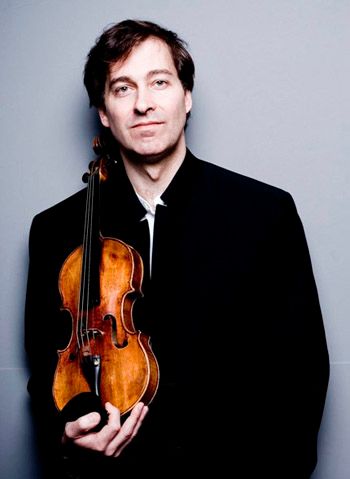
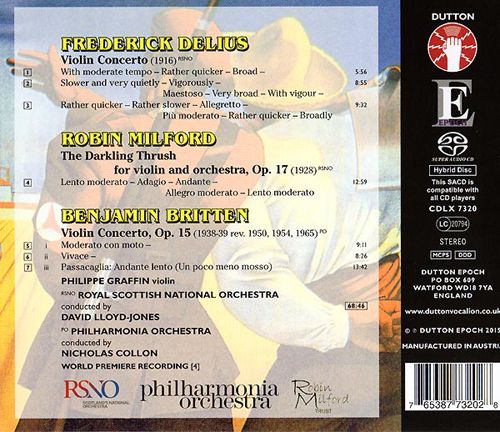
Source: Dutton Epoch CD (my rip!)
Formats: FLAC(RAR), DDD Stereo, mp3(320)
File Sizes: 326 MB / 158 MB (FLAC version incl. covers & booklet)
Download Link - [This is a new CD, both mp3 and FLAC versions are available upon PM(!) request only]
Please add to my reputation if you download and like this album!
Enjoy! Don't share! Buy the original! And please click on "Reputation" button if you downloaded this album! :)
